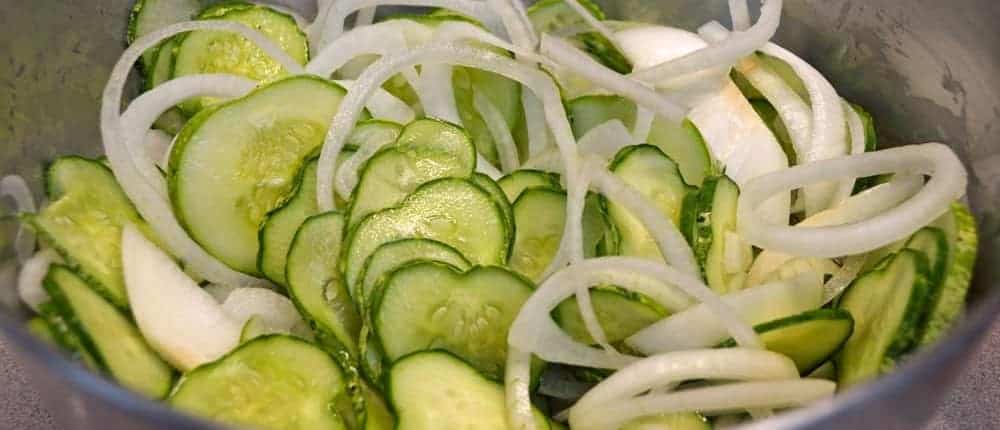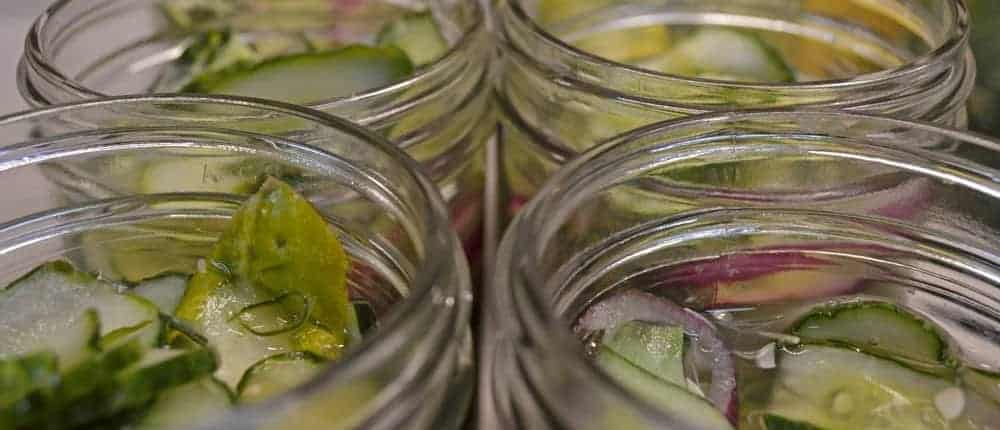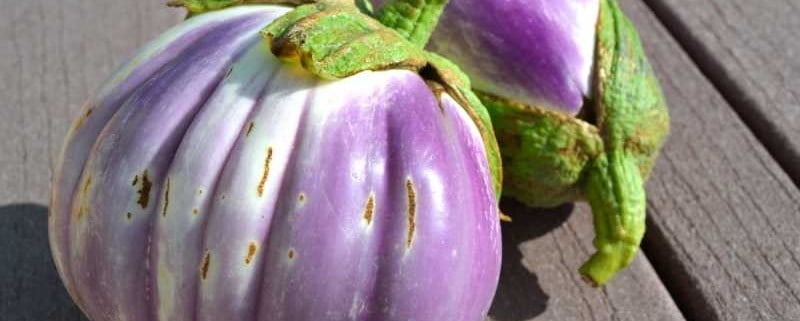Elevate your coleslaw game with Chipotle-Cilantro Coleslaw. This recipe features roasted golden beets for a unique and delicious twist.
Tag Archive for: Onion
Fresh Mint Taste All Year
Lime and mint are not usually thought of together (if at all) in combination with pickles, but they should be! The lime-mint flavors work together with the cucumbers to make something much more than the sum of their parts – bright, refreshing, and absolutely addictively delicious.
Even after a year in the freezer the mint tastes fresh-picked.
Similar to our much-beloved Cilantro Freezer Pickles, this is a very simple and fast recipe that doesn’t need canning or heat and will handle any amount of surplus cucumbers – from a few up to way too many!
Each recipe makes about 4 pints, so you can expand accordingly.
Another freezer pickle recipe that keeps the fresh-picked flavors long after the season is gone.
Quick, easy, and addictively delicious, the lime and mint work with the cucumber to create something amazing.
- 2 1/2 lbs pickling cucumbers thinly sliced
- 3 tbs pickling salt Kosher salt works and tastes great
- 1/2 cup mild onion thinly sliced
- 1 small sweet pepper chopped
- 1 lime zest grated
- 2 cloves garlic minced
- 1/4 cup fresh mint leaves minced
- 1 1/2 cups sugar organic cane sugar gives a more rounded flavor
- 1 1/2 cups white vinegar red wine or cider gives different flavors
Wash and thinly slice cucumbers – do not peel, then thinly slice onions.
Toss cucumbers and onions in a large bowl with salt, mixing well to evenly distribute the salt. Let stand at room temperature for 2 – 3 hours, then drain excess liquid but do not rinse.
Combine remaining ingredients in a separate bowl, mix well and pour over vegetables, stirring well to mix. Refrigerate for 8 – 10 hours or overnight.
Pack the vegetables and brine in freezer-proof rigid containers and freeze. Make sure to leave about 1 inch of headspace to allow for expansion so the jars don’t break.
When packing the vegetables, make sure the brine completely covers them to prevent freezer burn and ensure the best flavors.
Freeze for a minimum of 2 weeks to allow the flavors to mature and mingle.
To serve, thaw overnight in the refrigerator and enjoy!
We use a Cuisinart or similar kitchen appliance to slice the vegetables – reducing our prep time to a few minutes.
Make the pickles according to the recipe, then experiment and use different ingredients to suit your tastes or the occasion. Try sweet onions, more pepper, lime, or mint for a more intense flavor. Different sugars have a different effect on the final flavor – try palm sugar, turbinado, or even a little brown sugar to the mix. Same with the vinegar – find which one you like best!
Making Lime-Mint Freezer Pickles
Start by slicing the vegetables…
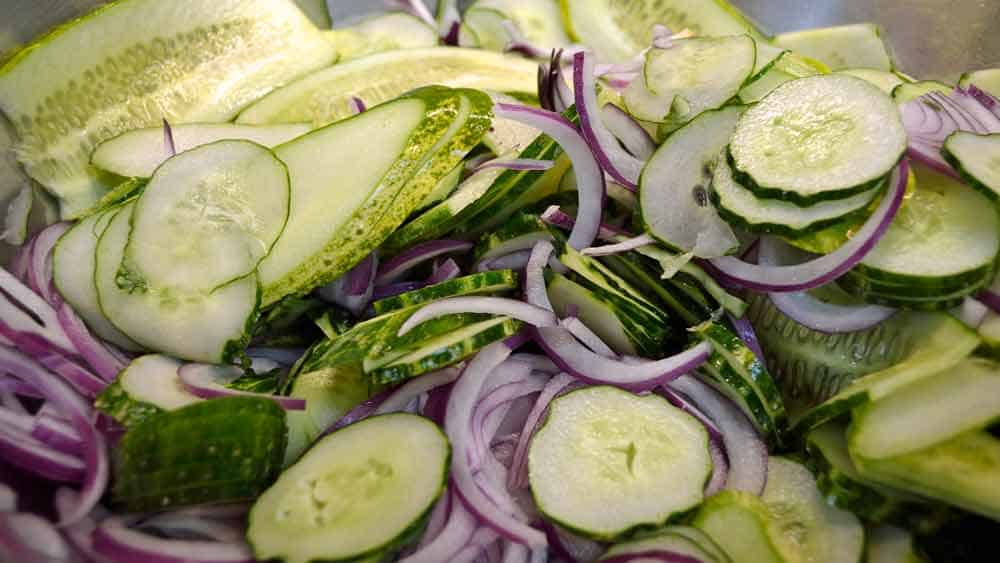
…then salt them and let sit for a couple of hours. Don’t worry if you get busy and they sit all day – they’ll be just as tasty!
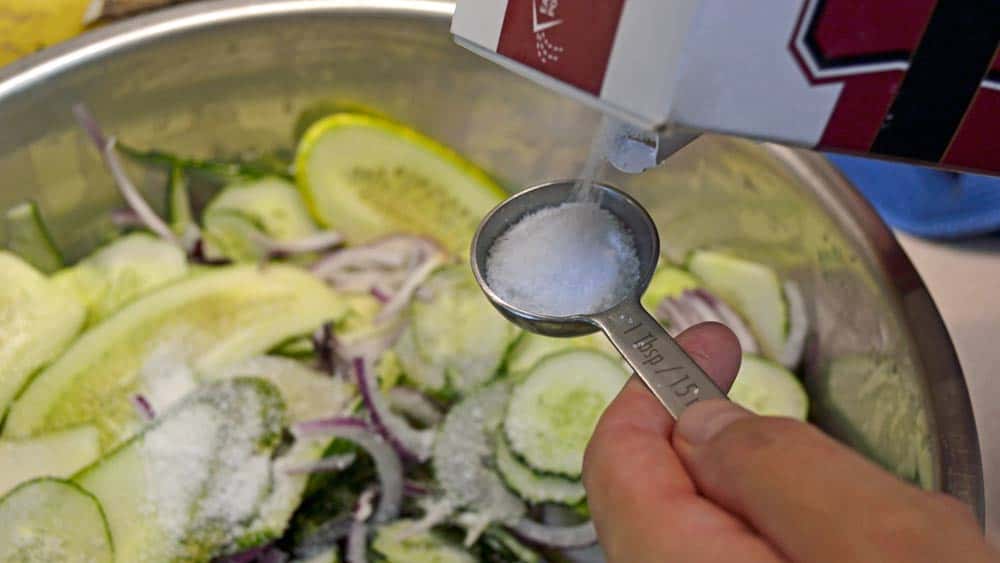
The salt draws out the natural juices, creating a brine to preserve the flavors.
After sitting, drain off the brine but do not rinse.
Combine the sweet pepper slices and remaining ingredients into a separate bowl, mix well, then pour over the brined vegetables and refrigerate overnight.
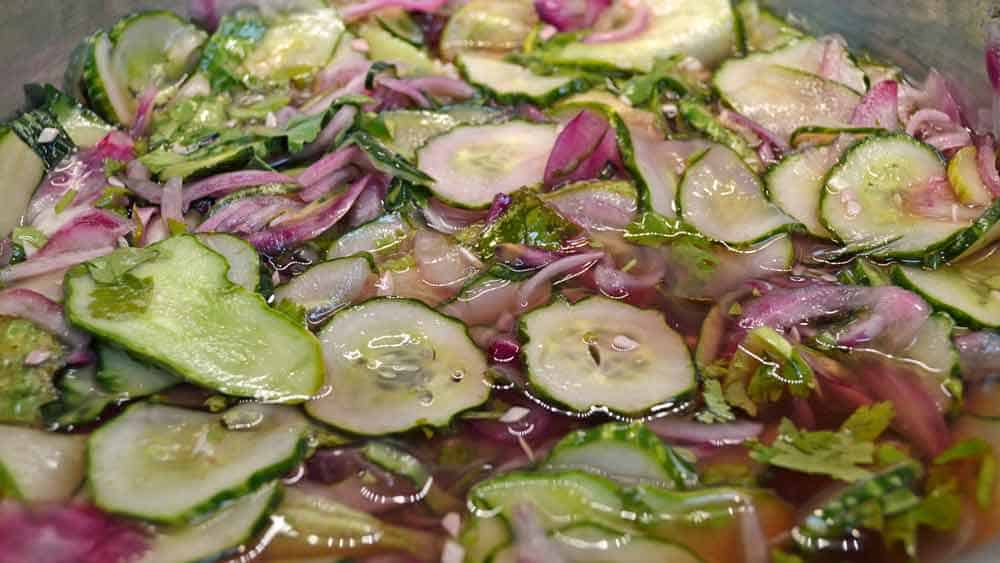
The next day, pack the vegetables into a freezer-proof container or bag. We like to use pint canning jars – just the perfect size for a family picnic or BBQ. If the gathering is larger, we take two.
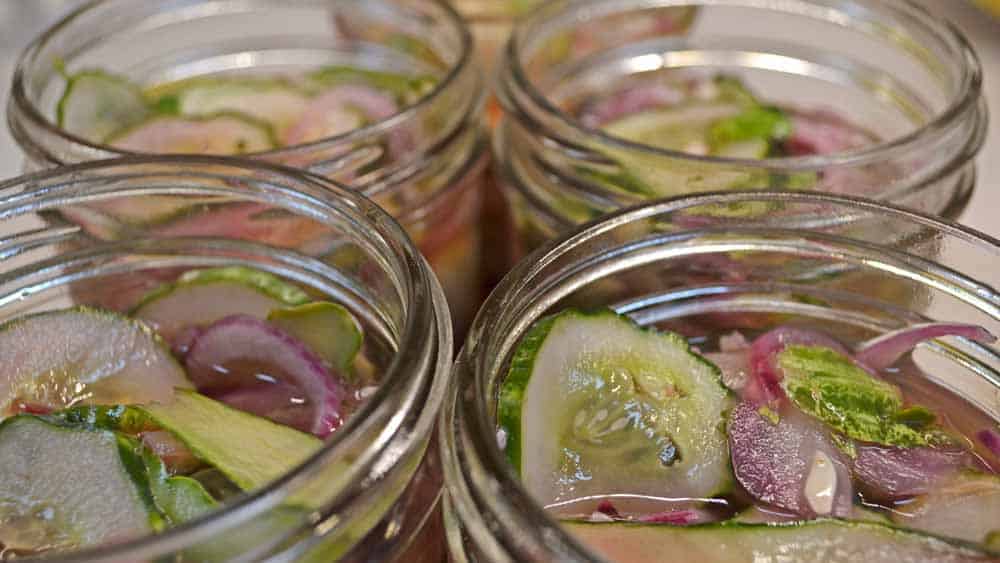
When packing the jars or containers, just make sure to leave enough room for expansion so they don’t break or split the containers. Cover the vegetables with the pickling solution for the best flavor and to prevent freezer burn of exposed vegetables.
Freeze for at least 2 weeks for the flavors to mingle and mature before serving. Thaw in the refrigerator overnight and serve cold.
Slow cooked caramelized onions are great, but what if you took that further?
Like, a lot further. Say, six hours full of slow cooked, caramelized goodness.
You would wind up with what Chef Michael Solomonov makes at Zahav, his Israeli-inspired restaurant in Philadelphia.
The ingredients couldn’t be simpler –
1â„2 cup olive oil6 lbs yellow or sweet onions (about 12 large), choppedKosher salt or sea salt to tastePlace the onions in a heavy heat-retaining pot. I’ve used cast iron for over 20 years and haven’t found anything better for this type of cooking!Pour the olive oil over the top of the chopped onions, then sprinkle the sea salt and stir well.
Chop the onions into smaller pieces. I love using sweet onions as they add a layer to the flavors, but any mild onion will work well.
Of course, growing your own onions will give you the absolute best flavors, but a close second is your local Farmer’s Market. Look for the large, fat, sweet onions for this recipe. Yellow or sweet onions give excellent flavors, but red or purple onions will do just as well with a different color and flavor.
Early fall is a great time for planting onions to over-winter and finish growing next spring – giving you an extra dose of rich flavor and sweetness.
Add the chopped onions to the pot, add the olive oil and salt, then give a good stir to coat the onions.
Put on the covered grill or oven set to 250°F.
The pot of onions has just been put on the Kamado, where I was pre-roasting a chicken for a clay pot dish with onions and Poblano chiles.
Note how full the pot is – within a half inch or so of the top. As we progress, you’ll see how much this drops!
Smoking means cooking! The smoke always means a delicious meal is on the way.
The beauty of slow cooking outside is the freedom it gives you. There is no need to stand around the grill, you can do projects, read or take a nap and check the progress every so often. I try not to lift the lid more than twice an hour, to not lose heat and smoke.
After a couple of hours the onions begin to caramelize. Give them a stir at this point, then about once an hour.
See how much the level has dropped?
The lid is left off so the moisture evaporates and the smoke can infuse the onions.
No, these aren’t burned – they are finished!
What started out as a full pot has cooked down to just a couple of cups. All of those flavors have condensed and intensified, mellowing with the gentle heat and smoke from the grill.
Remove from the pan, let cool and store in the refrigerator for up to a month. They won’t last past a few days, but they will keep up to a month!
Now that you’ve got some smoky caramelized onions, what do you do with them?
Almost anything you want!
They are delicious as appetizers straight on crackers, spread on the bun of a fresh-grilled hamburger or as a remoulade on a steak. Mix half-and-half with our 30 Second Mayonnaise for a sandwich spread that will amaze! Chef Michael serves them mixed with salads, slathered on roast chicken, spread on toast with ricotta cheese, or swirled in sauteed chopped collard greens as a rich side dish.
I like them straight, spread on crackers for that full blast hit of flavors and smokiness. Spread on burgers is sublime as well.
Give this a try and let me know how you like them and what you use them on!
Spiced cauliflower soup is an easy and delicious dish – a warming winter’s dinner but is also a cool and creamy summer’s lunch entreé or appetizer. I had a smoked and roasted potato from roasting a chicken in the wood fired clay BBQ, so that added an extra dimension to the flavors.
The flavors are very engaging with more depth than would be anticipated from such simple ingredients. Use the coconut cream for a milder, richer and creamy soup, with the yogurt adding a tangy counterpoint.
Here’s what you could grow in your garden for this recipe –
- 1 large potato diced
- 1 medium cauliflower head chopped
- 1 medium onion chopped
- 1 tbsp oil
- 3 cloves garlic finely diced or crushed
- 1 tbsp grated fresh root ginger
- 2 tsp ground turmeric
- 1 tsp cumin seeds
- 1 tsp black mustard seeds
- 2 tsp ground coriander
- 4 cups vegetable stock
- 1 1/2 cups coconut cream or yogurt
- salt and freshly ground black pepper to taste
- fresh cilantro or parsley to garnish
- Add potato, onion and cauliflower to a large heavy bottomed pot or deep saucepan with the oil and 1/4 cup water. Heat until bubbling then cover and lower heat to simmer for about 10 minutes.
- Add the garlic, ginger and spices. Cook for 2 minutes, stirring occasionally, then add stock, salt and black pepper.
- Increase heat and bring to just before a boil, then lower heat and simmer for about 20 minutes.
- Stir in coconut cream or yogurt, taste and adjust salt and black pepper and serve with a generous pinch of freshly chopped cilantro or parsley.
Makes excellent and super easy leftovers for the following day's lunch. It is surprisingly satisfying on a cold winter night, but is light and cool on a summer's day.
This is extremely easy to make and doesn’t need you to watch or stir it the entire time, freeing you up for other things for most of the cooking time.
Starting with the main ingredients, I chopped them into appropriate sized pieces. I left the skin on the potato for the extra smoky flavor, but also because lots of nutrients are in the skin that I didn’t want to lose. Same thing with the ginger, I just thinly sliced it and then diced it finely so that it would cook down into the texture of the soup.
The cooked vegetables after adding the spices but just before adding the vegetable stock. Turmeric is highly beneficial to health, especially when activated by ground black pepper and teamed up with a healthy fat like coconut oil. Much more of the nutrients and benefits are delivered to the body this way, so this soup is the perfect, delicious delivery method!
Ready for enjoyment! The potato cooks down, thickening the consistency and the cauliflower almost completely cooks into the soup. If you want, transfer the finished soup to a blender for a quick spin to make it smoother before serving. The fresh chopped cilantro adds a bright, lively note!
This Sicilian eggplant and tomato sauce is wonderful and surprising with its richness and depth of flavors, both fresh and roasted. Easy and delicious!
We did a video in partnership with our local hospital about growing and cooking with herbs. Yavapai Regional Medical Center has created “Your Healthy Kitchen” recognizing and promoting the idea of eating and staying healthy makes a lot of sense.
We talk about some of the easier to grow fresh herbs that do well almost anywhere and in any size container, then use some of those same herbs in making a delicious tapenade or appetizer of olives, capers and herbs to finish the show.
Here’s what herbs and vegetables you could grow in your garden for this recipe – Dill, Parsley, Rosemary, Thyme & Onions
Whether you have a bounty of young green beans from your garden, or have gotten a great deal at the Farmer’s Market – here’s a quick and simply delicious way to make them into a very memorable side dish that will be talked about! The French name for the classic, tender green bean or filet bean is “haricots vert”. If you are looking for them at the market, look for young, slender and tender green beans that have just the faintest hint of the bean when you feel the shell.
Here’s what could come out of your garden for this recipe – Green Beans and Green Onions!
- 1 lb. young green beans also known as haricots verts, trimmed
- 3 tbsp. olive oil
- 1 tbsp. red wine vinegar
- 2 tsp. Dijon mustard
- 1 shallot or 3 small green onions minced
- Freshly ground black pepper
- Kosher or freshly ground salt
- Bring a large pot of salted water to a boil.
- Add the green beans and cook until bright green and crisp-tender, about 1 minute.
- Drain and transfer to a bowl of ice water for 1 minute.
- Drain the beans from the ice water and let sit in a colander while making the dressing.
- In a large bowl, whisk olive oil, vinegar, mustard and minced shallot.
- Transfer the drained green beans to a serving bowl, then pour the dressing over, toss to combine and season with salt and pepper to taste.
People often come back for second servings when they discover how delicious this unusual flavor combination is, so consider making extra!
Green beans can be a blessing in disguise – they are a welcome addition to the dinner table in the spring when they first arrive, but can soon wear out their welcome as their prolific nature is truly shown. Just how many ways can they be prepared without being the dreaded green vegetable on the plate?
We love them this way; a very simple, easy and fast way to make them unique and delicious. They can easily balance a rich roasted chicken or grilled meats, but also add to a fish or seafood plate.
Consider this a base for exploring several different directions with the green beans – using toasted almonds, sauteed garlic and even taking the grated Parmesan approach and adding pasta for a light summer evening meal.
Here’s what could come out of your garden for this recipe – Green Beans and Green Onions!
- 1 lb fresh green beans
- 2 tbs butter
- 2 tbs olive oil
- 1 - 2 shallots or small bunch green onions, minced
- Freshly squeezed lemon juice
- Salt to taste
- Freshly ground Parmesan cheese
- Fresh lemon zest
- Bring a pot of well-salted water to boil. Add green beans and cook for 5 minutes, then drain and plunge into waiting pot of ice water to stop cooking. Drain when cold.
- Meanwhile, sauté shallots in butter and olive oil over medium heat until tender, about 5 minutes.
- Add beans to shallot mixture and continue to sauté until beans are warm and just tender, about 2 to 3 minutes.
- Sprinkle with lemon juice and season to taste with salt. Top with freshly ground Parmesan cheese if desired.
- Serve at once.
Blanching the green beans in boiling water keeps them from being over-cooked when sauteing them with the shallots.
Making polenta takes a bit of time, care, attention and love but the results are delicious and will become highly valued by friends and family. It is a peasant dish, a close relative to cornmeal mush that has been refined and is no longer just a starvation staple of poor subsistence farmers. Polenta is featured in highbrow restaurants with exotic ingredients anchored to the cornmeal base. Done the traditional way, polenta takes work – about an hour straight of constant stirring – but there is another method that is simply delicious without all of the work. There is still some stirring and a good timer is needed, but you won’t be chained to the stove the entire time.
Northern Italy is where polenta is a staple, made from corn brought over from the New World and grown ever since the mid-1500s. As with many Italian dishes, there are many regional variances from a light Venetian recipe to the Lombardy buckwheat and corn tradition that is mixed with garlic and aged cheese.
Being invited to a home in Northern Italy and having polenta is an honor, a sign that you are not simply a guest but are considered as one of the family as polenta is home cooking and not for “company”. Part of it is the work involved to make it in the traditional way; the other is that until recently polenta was looked down upon as food for the poor and not to be served to honored guests. Now that those same Northern Italian areas have achieved wealth and status, polenta is eaten for enjoyment, to remember and as a comfort food.
I’ve been a fan of Marcella Hazan for years. It was in one of her earlier cookbooks that I learned the simple method of successfully making homemade noodles. It isn’t difficult, but I found out that I was rushing the process and not allowing the noodles to relax between rolling them out. After reading her process where she walks through the process and explains why things need to be done in a certain way and at a certain time, I made the most delicious fresh noodles and became a fan of her writing. I was never able to take one of her cooking classes, but her books have always had that way of explaining why things are done the way they are, helping me to be a better cook and capture the essence of those flavors.
Marcella has developed an easier method of making polenta that tastes like the traditional way. It still takes about an hour to make, but you can walk away from the stove for sections of time, going back to stir and monitor the process. You will see the cornmeal mixture turn silky and soft from coarse and grainy about half way through!
In the spirit of cooking with more locally sourced ingredients, we’ve changed this recipe from corn and buckwheat flour to yellow and blue cornmeal with homemade smoked chicken broth instead of just water. Growing your own corn just for polenta will make complete sense during the very first bite! The flavors cannot be compared to any cornmeal that is store-bought. They will be richer, bolder, earthy and sweet with a substantial feeling after tasting. Making extra takes no more work and will give you extras for the next few days to use as an appetizer, side dish, breakfast foundation or snack.
Here’s what you could grow in your garden for this recipe –
- 10 cups of liquid - 1 - 2 quarts of homemade chicken broth 4 - 8 cups supplemented by water to make the total
- 1 3/4 cups coarse ground yellow cornmeal
- 1 3/4 cups blue cornmeal - will usually be finer ground
- 2 yellow or white onions - diced
- 3 cloves garlic - diced
- 1 1/2 tablespoons salt - preferably sea salt or RealSalt
- 1 cup dry white wine
- 1 tablespoon extra virgin olive oil
- 1 cup aged Italian grating cheese
- Add the water and broth to a large heavy pot that has at least 3 - 4 inches of room above the liquid and bring to a boil over medium high heat.
- While water is heating, mix both colors of cornmeal in a bowl.
- When the liquid is boiling slowly, slowly add the cornmeal to the water while stirring with a wire whisk. It is important to add the cornmeal in a thin trickle to avoid clumping. You can add it a fistful at a time or use a 1/2 cup measuring cup, just make sure to add it slowly, being able to see the grains as they trickle in. This step may take several minutes, just be patient.
- Once all of the cornmeal has been added, stir well for a couple of minutes with a strong long-handled spoon. Add onions and garlic and stir in. After stirring well, cover with a tight-fitting lid and adjust heat to a low steady simmer.
- Set the timer for 10 minutes. After 10 minutes, uncover and stir for at least 1 minute, preferably 2. Make sure to mix the mixture well and from different directions.
- Add wine and olive oil at the 20 minute mark
- Repeat timer 3 times, stirring well for 1 - 2 minutes each time. You will feel the mixture firm up each time. If needed reduce the heat slightly.
- After 40 minutes you should see the mixture lose it's grainy, course texture and become silky, soft and creamy. If you are stirring at the time you will see it happen. It will also begin to pull away from the sides of the pot into a single mass.
- When it becomes soft and creamy, add cheese and stir vigorously for 1 minute, cover it, turn the heat off and let sit for 3 - 5 minutes to firm up.
- Serve hot with a rich roast, sausages, or roasted chicken.
- Allow extra to firm up either in the pot or scoop out onto a moistened board or counter top for use with other meals.
Polenta is extremely versatile - grilled, pan-fried, with eggs for breakfast or warmed and drizzled with olive oil and Balsamic vinegar for an appetizer.
Adapted from Marcella Cucina
Amazing flavors come from such simple ingredients! A closer look at the main ingredients.
This is how you should add the cornmeal – trickle it in slowly enough to see the individual grains of cornmeal.
The mixture will begin to get thicker at the end of adding the cornmeal, so you might have to change your grip on the whisk! I changed to the long spoon just after adding the rest of the cornmeal to make it easier to stir.
This was at about 40 – 45 minutes. I added the cheese and gave it a good stir for about a minute. You may or may not be able to see that it has turned silky and creamy at this point. I turned off the heat, covered it and let it sit for about 5 minutes after stirring the cheese in.
The finished result, accompanied by roasted beet and feta cheese salad dressed with olive oil and Balsamic vinegar.
Brussels sprouts were not my friends when I was a kid. They always showed up unexpectedly, unannounced and taking up way too much space on the dinner plate with their hateful ultimatum – “No leaving the table until your plate is clean.” The worst part was the soggy, slightly slimy texture combined with the sulfurous, earthy, somewhat metallic taste from steaming.
Fast forward 30 odd years and after learning to cook, garden and eat healthy and tasty foods I’ve started to warm up to Brussels sprouts a bit more. I’m not having them twice a week or anything, but I’ve learned how to cook them a couple of ways that make them surprisingly tasty. This recipe is the first one that I tried where I really liked them, the other is Roasted Brussels Sprouts with Maple-Dijon Dressing which is completely unexpected but thoroughly delicious. That is a more sophisticated approach, this is rustic, simple and hugely satisfying. I’ve used this recipe to re-introduce others to an entirely different Brussels sprout than we all knew and hated as kids.
Take the time to properly roast the Brussels sprouts – in a cast-iron deep skillet is the absolute best way as the even heat caramelizes the sprouts, making them nutty, rich and very flavorful. Roasting opens up the flavors that are otherwise locked away and missed.
Here’s what you could grow in your garden for this recipe –
- 1 pound of Brussels sprouts halved
- 1 pound fresh sausage - Italian Polish or Sicilian, sliced
- 2 medium onions diced large
- 2 large bell peppers - preferably red or yellow diced
- 3 cloves garlic sliced thinly
- Olive oil
- Balsamic vinegar
- Sea salt and freshly ground pepper
- Heat cast iron skillet over low to medium heat, add halved Brussels sprouts, making sure they are all cut side down. Add enough olive oil to lightly coat the bottom of the pan. Check every few minutes by slightly lifting a sprout to check the progress of the caramelization, about 15 - 20 minutes. Add a drizzle of olive oil if sprouts start to stick to pan.
- Once the Brussels sprouts have started to caramelize, add the sausage and stir to cook - about 5 minutes.
- When the sausage is beginning to brown, add onions, bell pepper and garlic. Stir to cook evenly, about 5 minutes.
- Add a generous splash of balsamic vinegar and stir to coat vegetables. Add salt and ground pepper to taste.
- Serve hot.
A good caramelization will have some dark spots on the Brussels sprouts, but don't worry - it adds to the flavor!
The hardest part of this dish is caramelizing the Brussels sprouts – which isn’t that difficult, just requiring a bit of patience. Allow time to let them slowly brown. Here’s what the caramelizing looks like… no they aren’t burned, but you don’t want to go much darker than this! The slow caramelizing adds an unexpected nuttiness and depth of flavor.
A closer view of what they look like when almost done. They will be slightly firm but not crunchy, yet a long way from limp and slimy!
On to the plate and ready for a feast!
Ellen shares her research on the history of beets today. Did you know that beets weren’t always the deep red we are familiar with, but that characteristic was selected for and bred into them in the 1700’s? Lighter red existed much earlier than that, but not in the blood-red shades we know today.
Make sure to visit our Beet department and grow your own tasty varieties! Don’t forget to try both recipes at the end of today’s article.
Beet (Beta vulgaris)
The beet as we know it today is a handsome vegetable. It is rooted in the ground, transferring the earthy taste of good soil through its deep red root. The beet is an old vegetable, ascribed with aphrodesiac and blood strengthening qualities. Its wild ancestor, the sea beet (Beta vulgaris sp. Maratima) is not a sweet vegetable–it is a bunched mass of greens with a slender white-yellow root that grows almost on the tide line of the ocean.
The beet as we know it today has a larger, fleshier, and darker colored root than the seabeet. The seabeet grows wild along the Mediterranean coast, down the coast of the Corsican sea. The sea beet has the heart-shaped leaves, deep glossy green color, and bunching tendencies of garden beets. Today, we almost equivocally think of beetroot, as it is commonly called in Britian, New Zealand, and Australia, as blood-red. In fact, red pigmentation was selected and bred into the beet in the mid 18th century. While white colored beets are not common in the public marketplace, they are the leading beet grown for sugar production.
Another common cultivar of beta vulgaris is Swiss chard, whose name comes from a bastardization of the Sicula–the leafy green that Swiss chard is most likely descended from. Swiss chard is grown for its large leaves, which offer a near year-round source of leafy greens–with white, red, or rainbow colored ribs. Beet greens taste remarkably similar to chard and in fact the beet is the same as Swiss chard, but it has been bred to produce large edible roots, rather than put that energy into leaf production.
Anyone who has tasted a fresh beet can attest to its earthy, mineral taste. For those who find red beets to be too intense, the yellow or lighter fleshed cultivars offer a good substitute. More mellow tasting varieties include Golden Detroit and Chioggia beets. Chard’s buttery texture and almost ‘healthy’ taste is unbeatable, and I almost always feel better for eating it.
The sweetness of beets is well known. The vegetable has been associated in many cultures with love; it is said if a man and a woman eat from the same beet, they will fall in love. Aphrodisiac qualities were well-known in the beet in Ancient Greece and in Roman times. The red beet was hung on the walls of prostitution houses in 740 AD and again in the early 20th century. The beet is an old symbol of love and lust–and wealth. In Delphi, a beet was said to be worth its weight in silver, and was offered to Apollo to ensure wealth.
Today, the beet is well known and loved by gardeners and small growers. Its color and sweet taste are a welcome mix to the bitter greens and other green vegetables that are available in the spring months. Traditionally, there were three kinds of beets in cultivation. The sugar beet is used to produce sugar and was developed in Upper Silesia (now Poland) in the 1740’s. The majority of Europe’s sugar at the time was coming to the continent via the British colonies in the Caribbean. The sugar beet became better known when Napoleon Bonaparte announced an embargo with the British in 1813 and endorsed the growing and processing of sugar beets.
The process of extracting sugar from beets continues today in America and Europe, with Russia producing 1/6th of the world’s sugar beets. They are commercially grown all over the United States, concentrated in the Midwest and into Washington and Colorado States. Today, 20-30% of the world’s sugar comes from the sugar beet. As in Napoleons time, the United States sugar beet industry grew immensely after we enforced an embargo with Cuba, which was the major source of sugar for the United States.
The second type of beet is a forage beet, or manglewertzle, which simply means “root beet”. They are grown as livestock feed and are either left in the ground for sheep or other animals to uproot or grown, harvested, and fed out during the winter months. These varieties of beet have quickly lost popularity and are the most genetically threatened. One well-known Pennsylvania revival is Deacon Dan’s, which William Woys Weaver calls, “the field pumpkins of the beet world…some can weigh as much as 15 pounds but they need good, sandy soil to develop such large size.”
The most well known beets are those of the garden. They are typically red, although if you look closely, there are many shades of red, pink, even yellow to be found in garden beets today. They come in a variety of shapes, from perfectly spherical to flattened on the bottom half, to cylindrical. The garden beet is used for pickling, canning, eating fresh, roasted, and really, however you can think to enjoy them!
For some, the beet releases memories of vinegary pickles, or generic canned red vegetable, or the inevitable stained fingers one gets when preparing cooked beets. Beets food uses extend into food coloring, dyes, and even making tomato sauces more red. Nothing beats a fresh beet! Beets are served many ways, from shredded raw into a salad, roasted, or made into a soup. Borscht is a traditional soup from Ukraine–it is said there are as many recipes for borscht as there are villages throughout Eastern Europe. I enjoy this delightfully colored soup all year long, served chilled or hot. If borscht is not your thing, try the roasted beet salad with feta and cilantro.
Here’s what could come out of your garden for this recipe – Beets, Onion, Carrots, Cabbage and Dill!
Here’s what could come out of your garden for this recipe – Beets and Cilantro!Traditional BorschtBorscht is a traditional Eastern European soup that is served either hot or cold. There are many different variations, but this is a good starting point.Servings: 4Ingredients
- 2 large or 3 medium beets thoroughly washed
- 2 large or 3 medium potatoes sliced into bite-sized pieces
- 4 Tbsp of cooking oil
- 1 medium onion finely chopped
- 2 carrots grated
- 1/2 head of cabbage thinly chopped
- 1 can kidney beans with their juice
- 2 bay leaves
- 10 cups water and 6 cups broth to get 16 cups liquid total
- 5 Tbsp ketchup
- 4 Tbsp lemon juice
Instructions
Serve with a dollop of sour cream if serving hot. To serve chilled, simply make a day in advance and refrigerate. Take out about 15 minutes to a half hour before serving so the flavors will be noticeable.
Serves 4 as a meal, or 6 as an introductory courseRoasted Beet SaladThe richness of the roasted beets are offset and enhanced by the tang of the cheese and hint of apple cider vinegar.Servings: 4Ingredients
- 1-2 lbs beets red and yellow make a beautiful salad, but one or the other will do
- Feta or soft goat cheese
- Olive oil
- Apple cider vinegar
- Salt and pepper
- 1/2 bunch cilantro
Instructions
Serves 4 as a side salad.
Peceto Asado con Tallerines (Argentine Beef Roast with Fettuccine)
Argentina is world-famous for the beef they raise on the open grassland plains of the Pampas. It isn’t surprising to see how creative they are with using beef in so many different ways, much like the Italians have finely crafted the myriad uses of pork in their cuisine.
To expand my cuisine beyond the beloved Mexican and Central American dishes that I’ve grown up with, I wanted to try something a little different but delicious. This beef roast is the first result of our experimentation, and it turned out as succulent and mouthwatering as the photos show. There was a breadth and depth to the flavors that was hard to describe – the roast was tender, juicy and had a number of flavor combinations that kept hitting the tongue, then the tomato sauce balanced the roast out beautifully.
We used a large roast to give us some for an easy, creative dinner or two during the week. Scroll past the recipe for more photos and commentary!
Here’s what could come out of your garden for this recipe – Tomato, Onion, Bell Pepper and Rosemary!
- 1 Beef roast about 4 lbs
- 1 Head of garlic peeled and crushed or diced
- 1/3 Cup olive oil
- 1 Tsp salt
- 1 Tsp fresh ground black pepper
- 2 Tbs fresh rosemary finely diced
- 1/2 Cup red wine or water
- 8 Cups cooked fettuccine linguine or spaghetti
- Juice of 1 freshly squeezed lemon and orange
- 1/3 Cup olive oil
- 1 Medium onion chopped
- 1 Bell pepper - yellow or red preferred chopped
- 2 Large tomatoes chopped or 1 can of chopped tomato puree
- 1 Cup well-seasoned beef broth
- 2 Dried bay leaves
- 2 Tsp Mexican oregano
- Sea salt to taste
- Trim any excess fat from the roast.
- In a mortar, mash the garlic into a paste, then lightly crush the rosemary leaves. Mix with the oil, salt and pepper forming a paste. Rub into the roast; cover with plastic wrap and refrigerate overnight.
- 2 - 3 hours before roasting, remove plastic wrap, place in bowl and pour lemon and orange juice over roast.
- It is best to roast over mesquite charcoal for the absolute best flavor, but oven roasting will still be very tasty.
- Heat covered charcoal grill to around 325°F and roast over the coals for 10 - 15 minutes each side to sear and seal the juices in. After 30 minutes, place roast in a shallow roasting pan on a pizza stone to finish roasting over an indirect heat. Turn every 20 minutes until tender.
- If roasting in oven, start with roast in shallow pan and turn and bast every 20 minutes.
- Once roast is tender, remove from heat and let sit for 10 minutes then slice thinly across the grain.
- Heat the oil in a heavy bottomed skillet over medium heat.
- Saute the onions until soft, add the bell pepper and saute until just beginning to soften.
- Add the tomatoes and cook uncovered until they release their juices, stirring consistently as the juices evaporate a bit.
- Add the beef broth, bay leaves, Mexican oregano. Bring to a boil, then reduce heat to a simmer.
- Simmer for 10 - 15 minutes until slightly thickened and season to taste with salt.
- Set aside to serve with noodles.
- Arrange warm noodles on the plate, ladle a generous helping of tuco on the noodles and layer with 3 or more slices of roast on top.
- Garnish with a sprig of rosemary if desired.
This is a great way to cook a large portion of roast for a scrumptious Sunday dinner to have the basis of several outstanding meals during the week.
Here is what dinner started with. The beef is locally grown, semi-grassfed from a neighbor. I call it semi-grassfed as we simply don’t have enough grass in central Arizona on smaller acreage to completely feed a large animal like a beef cow. We do know exactly how this beef was raised and the processor is local as well. This beef traveled less than 20 miles from hoof to plate!
After just over an hour, this is the beauty that emerged from our Kamado, a Japanese charcoal smoker/cooker. The deep red is from the mesquite smoke, and the taste test that I cut off is apparent. Delicious!
The tuco sauce close-up. It was a different experience making a non-Italian tomato sauce! It was rich, flavorful and a perfect counter to the intense flavors of the roasted beef.
Just after plating, the first glamor shot!
This smoked, yogurt marinated beef roast was served for Cindy’s birthday dinner, where I wanted to do something very tasty, a bit unusual and didn’t require hovering over the stove in the kitchen for a long time, as we were busy with catching up in the office after two successive weekends presenting at gardening shows.
We are fortunate to have some locally raised beef that is delicious in its own right, so that made a perfect base on which to build. I was perusing one of the newer issues of Saveur magazine and came across the dessert idea – a baked yogurt tart – and saw the recipe for grilled yogurt marinated lamb chops. This is our version, slow roasted and smoked over mesquite charcoal in a Kamado, or Japanese ceramic grill. I roasted this at about 300°F for just a bit over 2 hours, as grass-fed beef shouldn’t be cooked as long as conventionally raised beef roast.
The results were fabulous – the beef roast had a rich, smoky beef flavor that is missing in store bought beef, followed by the tangy, complex flavors of the marinade. Prepare this in the morning and roast it in the afternoon, planning about 2 – 3 hours for the roasting, depending on the size of your roast.
This is the perfect centerpiece for an impressive and delicious dinner that won’t take all of your day to prepare!
Scroll down after the recipe for photos showing the process.
Here’s what could come out of your garden for this recipe – Onion and Cumin, along with garlic you’ve grown!
- 1 large beef roast about 4 - 6 lbs
- 1 large red onion finely chopped
- Sea salt and freshly ground black pepper to taste
- 1 cup plain full-fat yogurt
- 2½ tsp. ground cumin
- 2 tsp. ground green cardamom
- 1/2 section star anise
- 1 tsp. ground caraway seeds
- 8 cloves garlic mashed into a paste
- Zest and juice of 1 lemon
- Grind cumin, green cardamom, caraway, star anise in a mortar and pestle. Add to mixing bowl with yogurt.
- Peel and crush garlic into a paste in mortar and pestle.
- Stir yogurt, freshly ground spices, garlic paste, zest and lemon juice in a bowl.
- Butterfly beef roast in a circular cut about 1 inch thick, lay open and spoon yogurt marinade over, leaving a small amount for the outside.
- Roll up and tie with butcher's twine, spoon remainder of marinade on outside.
- Cover with foil, marinade for 4 hours in refrigerator.
- Heat charcoal or covered gas grill to medium. 300°F is target temperature. Once temperature is stabilized, roast beef for 2 - 2 1/2 hours, turning once each hour.
- Roast until desired doneness, then remove and let sit on platter for 5 - 10 minutes. Slice and serve.
Grass-fed beef will be tough and chewy if cooked to the usual USDA temperatures most of us are used to. The USDA recommends the beef be cooked to 145 - 170°F, while 120 - 140°F is best for pastured or grass-fed beef. Shannon Hayes at www.grassfedcooking.com has taught me the most about bringing the rich and delicious flavors from these meats!
Adapted from Saveur Magazine #163
We assembled all of the ingredients to start.
A close-up view of the spices. I actually didn’t use all of them, but had gathered them when doing the brainstorming and adaptation of the original recipe.
I prefer to hand grind my spices when I have the time, the flavor is much better, more defined and richer than with a blender or mechanical spice grinder. The crushing and twisting motion really does make a difference. We also found this applies to the flavors of pesto!
There is green cardamom, star anise, caraway and cumin seeds in there.
During the grinding process, the most amazing aromas drift up. Cindy had come in and commented on how wonderful it smelled already, and I was only grinding the spices! I ground the cardamom pods whole to begin with, then pulled the shells out after crushing them a bit to release their flavors.
Next up was the garlic. I used the “Peel Garlic in 10 Seconds” trick, this time for the whole head. It still only took me maybe 15 seconds! The reason for grinding it instead of dicing or chopping it is to release the oils and flavors that only crushing or grinding will achieve.
After mixing the marinade and butterflying the roast into about an inch thick roll, I applied the marinade and wrapped it back up.
After liberally spooning the marinade on the inside and rolling it back up, I tied it with butcher’s twine, spooned the remainder of the marinade on the outside, put it into a bowl and then into the refrigerator for 4 – 5 hours to do it’s magic!
That afternoon I fired the Kamado up and once the temperature stabilized, the roast went on. I had spread the coals to the outside and put a small round cast iron griddle underneath to divert the heat to be more indirect. Once the internal temperature was 125°F in the center, it was ready to let rest and then slice. Beautiful and mouthwateringly aromatic!
It was hard to walk down wind of the smoker without popping the lid every time to check on it!
Once it had rested for 5 – 10 minutes, I sliced it and we dug in. Of the 4 – 6 pound roast, 3 of us ate only about 1/4 of it, so there will be a number of other tasty dishes that result from this one.
Roasted Butternut squash is the mainstay in many delicious cold season soups, with good reason. They are satisfying, slightly sweet and lend themselves to many savory seasonings without being overwhelmed. Here’s an unusual take on the classic with a slightly sweet twist thanks to maple syrup! It is very easy to make and works equally well as a cold weather soup served hot or a surprising spring soup served chilled.
Here’s what could come out of your garden for this recipe – carrots, onions, parsley and butternut squash!
- 2 medium butternut or other winter squash cut in half and seeded (about 4 cups)
- 1 cup chopped sweet onion
- 1 cup coarsely chopped carrot
- 1 teaspoon grated fresh ginger
- 4 1/2 cups homemade chicken stock can substitute ready-made broth
- 6 tablespoons maple syrup
- 1 teaspoon coarse salt
- Freshly ground black pepper
- 1/4 teaspoon freshly ground nutmeg
- 1/4 teaspoon freshly ground cinnamon Ceylon or Vietnamese is preferred for a warmer flavor
- 1/4 teaspoon freshly ground cardamom
- 1/4 cup heavy cream if desired optional
- 1 tablespoon fresh minced chives or parsley optional
- Roast squash, onion and carrot on a cookie sheet lined with foil in a 350F oven for 25 - 35 minutes or until fork tender. Scoop out squash from its shell.
- Working in batches, process roasted vegetables in a food processor, adding small amounts of stock and process until smooth. You can leave a few smaller chunks for a more rustic appearance.Transfer pureed mixture into heavy bottomed pot.
- Stir in maple syrup and remainder of seasonings. Simmer on low heat for 10 - 15 minutes, then taste for sweet balance.
- Swirl in a spoonful of cream and top with chives or parsley and serve hot with crusty bread.
The soup can be made up to serving, then refrigerated up to 3 days to allow flavors to mingle and reheated on stove top. It can also be frozen for up to 2 months.
Reheat soup on stove top before serving, then add cream and garnish.
Pechugas in Salsa de Poblano Gratinadas
This Mexican poblano chicken dish from the Oaxacan region is another one of our family’s favorite dishes, partially because it is easy to make, is absolutely delicious and makes fantastic leftovers for lunch the next day or so. The flavors combine the mild richness of the roasted poblano chiles with the smooth creaminess of the cream and cheese in typical Oaxacan style. Add into this the smoky, roasted and seasoned chicken and you’ve got a memorable dish! We usually serve this on a bed of Mexican rice with a salad on the side. It never fails to impress our guests, with most asking for the recipe or for a second serving.
You can make this ahead of time, either in stages or in full to be served when it is convenient for your schedule. The sauce can be made up to 2 days ahead of time and the chicken can be roasted the day before, so all that is needed is to add the sauce to the chicken and pop it in the oven for 30 minutes or until everything is hot. This is best when roasted on the grill outside for that incomparable smoky flavor, but is very good when done entirely inside with the chicken browned in a heavy bottomed pot first.
Oaxacan Chicken in Poblano Sauce
Ingredients
1 lb. chicken parts cut up – can use breasts or thighs
3 – 5 large poblano chiles
1 large onion, diced
2 cloves garlic, diced
1 1/2 cup half and half
1/4 lb. grated Monterey Jack cheese
Freshly ground salt and pepper
Seasoning for the chicken
1 Tbs. ground cumin
2 Tsp. ground coriander
1 Tsp. garlic powder
1 Tbs. dried Mexican oregano, crushed
1 Tsp. freshly ground pepper
1 Tsp. sea salt
Mix the chicken seasonings well and then sprinkle onto chicken pieces, covering moderately. Grill on a medium heat for 5 – 7 minutes a side, to cook about 1/2 way or more. Remove from grill.
Grill onion and poblano peppers for 7 Р10 minutes or until starting to soften. Remove from grill and remove the stem, seeds and membranes from the peppers, then dice into medium sized pieces. Alternately, saut̩ in a heavy bottomed pot for 7 -10 minutes after cutting up peppers.
Puree pepper and onion mixture in a blender with half and half. The texture can be smooth or slightly chunky, depending on your preference. Pour poblano sauce into a heavy pot, and then add chicken pieces one at a time, coating them well with the sauce.
Either bake in preheated oven at 350F for 20 – 25 minutes or until sauce is bubbly, or simmer on stovetop. Once sauce is bubbling, turn off heat and add grated cheese. Let sit for 3 – 5 minutes to melt cheese, then serve hot.
Serves 4 – 6
We did a photo essay for you to see how easy it is!
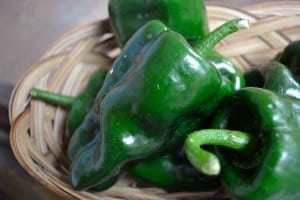 Starting with fresh Poblano peppers, we roasted them for a few minutes to soften them up, then removed the seeds, stems and membranes.
Starting with fresh Poblano peppers, we roasted them for a few minutes to soften them up, then removed the seeds, stems and membranes.
 Then we sauteed them for a few minutes to mingle their flavors.
Then we sauteed them for a few minutes to mingle their flavors.
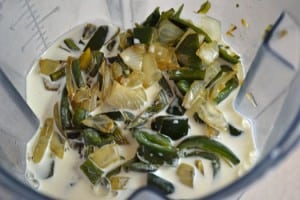 After they were ready, they went into the blender with some half and half and were pureed to a chunky texture. You can make it as smooth or chunky as you like.
After they were ready, they went into the blender with some half and half and were pureed to a chunky texture. You can make it as smooth or chunky as you like.
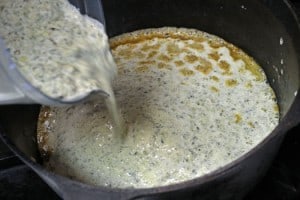 The poblano sauce was added back to the pot…
The poblano sauce was added back to the pot…
 Then the roasted chicken pieces were ready to be added.
Then the roasted chicken pieces were ready to be added.
 After adding the chicken pieces, the sauce was simmered for about 20 minutes until it was hot and bubbly, then the Monterey Jack cheese was added and melted with the heat off.
After adding the chicken pieces, the sauce was simmered for about 20 minutes until it was hot and bubbly, then the Monterey Jack cheese was added and melted with the heat off.
 Served on a bed of Mexican rice, it was both beautiful and delicious!
Served on a bed of Mexican rice, it was both beautiful and delicious!
With the garden in full production at this time of year, there is usually an over-abundance of fresh vegetables, especially tomatoes, basil and parsley. Of course, the first thought is a pasta sauce, but after the first few gallons have been made the magic fades a bit.
What else is there to create that is reasonably quick and stunningly delicious? With that we bring you a trio of antipasto recipes. These are perfect for light grazing through an evening with friends, or for just the two of you on the back deck watching a summer evening fade into twilight.
We will start with the simplest one first. It has been called a caponata spread, but is closer to a tapenade. This has been one of our go-to recipes for more than a decade, and came from a local wood-fired restaurant that has long since closed its doors. This is simple and quick to make and keeps well.
All of them are addictive, so double the amount you make for friends and you might have some left to enjoy the next day!
Zuma’s Caponata Spread
We will often use this as a base or starting point and substitute what is fresh at the moment. Adding green Spanish olives adds a nice flavor, as does adding one anchovy to move it more into the tapenade category. If we are pressed for time, we omit the onion and substitute 1/4 cup fresh garlic for the roasted.
- 1 cup olive oil
- 1/2 cup capers
- 1/2 cup black olives
- 1/2 cup fresh basil
- 1/2 cup fresh parsley
- 2 cups Roma tomatoes
- 1 large roasted onion
- 2 heads of roasted garlic
- Sea salt and freshly ground black pepper to taste
- Add all ingredients to food processor and pulse to a slightly chunky consistency.
- Store in refrigerator for at least 2 hours for flavors to blend. Serve with toasted bread or crackers.
Serves 4 – 6 as appetizers, 2 – 3 as antipasto
Classic Tapanade from Saveur Magazine
- 1 clove garlic
- 1 anchovy filet
- 1 tsp. chopped, rinsed, salt-packed capers
- 1/2 cup chopped, pitted olives
- 1 tbsp. chopped parsley
- 1/4 cup extra-virgin olive oil
- Juice from 1/4 of a lemon
- Crush garlic and anchovy filet with a mortar and pestle, then mix in capers, olives, and parsley.
- Stir in olive oil, add lemon juice, and combine well with a fork.
- Alternatively, add garlic and anchovy to food processor and pulse till blended, then add in capers, olives and parsley. Pulse to chop well while drizzling in olive oil, then add lemon juice and mix well.
Serves 4 – 6 as appetizers, 2 – 3 as antipasto
Sicilian Caponata
This is an adaptation of one of the oldest, most widely travelled recipes from the Mediterranean region, with several cultures contributing to the flavors and preparation. If you use fresh-from-the-garden eggplant you might not need to do the salting step, as this is used to remove bitterness.
- 2 eggplants (about 2 lbs.), cut into 1â„2″ cubes
- 3/4 cup extra-virgin olive oil
- 1 large yellow onion, coarsely chopped
- 1 anchovy filet, chopped
- 3 ripe medium tomatoes (about 1 lb.), cored, peeled, and coarsely chopped
- 2 ribs celery, thinly sliced
- 1â„4 cup red wine vinegar
- 2 tbsp. sugar
- 2 tbsp. tomato paste
- 2 tbsp. golden raisins
- 2 tbsp. pine nuts
- 2 tbsp. capers, rinsed
- 12 pitted green olives coarsely chopped
- 1 red bell pepper, roasted, peeled, cored, seeded, and thinly sliced
- 2 tbsp. coarsely chopped basil
- 2 tbsp. coarsely chopped flat-leaf parsley
- Sea salt and freshly ground black pepper to taste
- Put eggplant into a colander set over a large bowl; toss with 1 tbsp. salt. Top with a plate weighted down with several large cans; let drain for 1 hour. Rinse eggplant and pat dry with paper towels.
- Heat 2 tbsp. oil in a large skillet over medium-high heat. Add one-third of the eggplant and cook until golden brown, 7–8 minutes. Using a slotted spoon, transfer eggplant to a bowl. Repeat with oil and remaining eggplant.
- Reduce heat to medium-low and add remaining oil, onions, and anchovies; cook until soft, 14–15 minutes.
- Add tomatoes and celery and increase heat to medium; cook until tomatoes release their juices, 5–6 minutes.
- Add vinegar, sugar, and tomato paste; cook until thickened, 3–4 minutes.
- Add cooked eggplant, raisins, pine nuts, capers, olives, roasted peppers, and salt and pepper to taste. Cook until hot.
- Transfer to a plate; let cool slightly. Top with basil and parsley.
- Serve at room temperature.
Serves 4 – 6 as appetizers, 2 – 3 as antipasto
The book “The Culture of Vegetables and Flowers from Seeds and Roots” by Suttons and Sons printed in 1910 had this to say about the poppy-
“The recent developments of this flower have brought it into great and deserved popularity, and it may be safely affirmed that no other subject in our gardens affords a more imposing display of brilliant colouring during the blooming period. All the varieties are eminently adapted for enlivening shrubbery borders and the sides of carriage-drives. Large clumps of some of the bolder colours should be sown in spots that are visible from a distance, and they will present glowing masses of flowers.”
What a beautiful description for a flower that has been cultivated for a long time. Here are a few gardening tips for the poppy:
- When selecting the perfect spot, remember that they love bright sunlight for most of the day. If you live in a hot climate, pick a spot that will be at least partially shaded during the heat of the afternoon.
- A well-drained spot is needed, as the poppy’s roots will rot in waterlogged soil, especially during the winter months.
- Enjoy poppies where you plant them, they do not make good cut flowers.
- Wood chip mulch around the base will help reduce weeds as well as help keep needed moisture at the roots.
- Deadhead, or remove the individual flowers as the blooms fade and wilt. Removing the spent blooms encourages the plant to keep blooming throughout the summer.
- When the flowers have died down for the season, cut back the foliage to the ground. This will produce a second showing of attractive summer leaves.
Many people associate poppy seeds with the familiar and wonderful array of Eastern European baked goods, from poppy seed pie or the poppy seed filling in the Purim holiday classic Hamantaschen. The Czech Republic is one of Europe’s largest producers of poppy seeds. When you harvest your seed pods from your garden you can make your own savory dishes featuring the poppy seeds.
Here is a perennial favorite that is easy to make and tastes so much better made at home, Poppy Seed Dressing!
Poppy Seed Dressing
- 2 tbsp. Poppy seeds
- 1/2 cup raw sugar
- 1/3 cup white wine vinegar
- 2 tsp. dry mustard powder
- 2 tsp. kosher salt
- 1 tsp. freshly ground black pepper
- 1 small yellow onion, finely grated, juice reserved
- 3/4 cup sesame oil
- 1/4 cup olive oil
- Heat a 2-qt. saucepan over medium-high heat. Add poppy seeds, and cook, swirling pan constantly, until lightly toasted and fragrant, about 3 minutes.
- Add sugar, vinegar, mustard, salt, pepper, and onion with juice, and cook, stirring constantly, until sugar dissolves and mixture begins to simmer.
- Remove from heat and transfer to a blender.
- Add both oils, and blend until smooth; chill.
Makes about 2 cups
Preserving that overly abundant harvest has been one of the major challenges that gardening and agriculture has always had. In today’s world we are much more familiar with the processes of canning, drying and freezing as acceptable methods of preserving our garden’s harvest for the winter season and longer. These methods have their own set of challenges, though. Canning requires time, experience and knowledge to be successful. Freezing is pretty simple, but has its own set of needs to ensure the garden bounty isn’t lost to freezer burn or premature thawing. Drying is also simple, but benefits from modern drying equipment that can be expensive as an initial purchase.
What if there was another way, a method of preserving the harvest that is not only simple, non-intensive for both labor and equipment and was proven safe? One that is location and temperature independent, doesn’t care if you forget the exact timing and still produces an absolutely delicious product? There is! That method is fermentation. It has been proven safe over several thousand years, with at least that many different approaches and many more recipes. Almost every culture across history has contributed something to the art of fermentation.
Fermenting vegetables is an extremely simple, effective and tasty way to start experimenting and gaining knowledge, taste and experience. In addition to being easy and quick it is also highly nutritious and beneficial to your health.
Some folks are hesitant or outright afraid of trying fermentation for fear of accidentally growing the “wrong” bacteria and sickening or even killing themselves or their families. This is completely understandable in today’s world of anti-microbial soaps, detergents and wipes.
At least in the world of raw vegetables, this fear is unfounded. “As far as I know, there has never been a documented case of food-borne illness from fermented vegetables. Risky is not a word I would use to describe vegetable fermentation. It is one of the oldest and safest technologies we have.” This is from Fred Breidt, a USDA microbiologist specializing in vegetable fermentation.
In fact, fermenting commercially available vegetables will kill any pathogens that we’ve seen in the news as contributing to food-borne illnesses, as they simply cannot survive in the lactic acid environments of fermentation!
This is going to be a slightly different recipe format than we usually do. We will give you a foundational approach to fermenting any vegetables, and then give a basic recipe for a sweet and hot fermented pepper sauce or paste. The beauty of these recipes is that they are entirely scalable. Do you have an extra quart of hot chiles, a handful of sweet peppers and some garlic or onion? Great, we can work with that! Or do you have a couple of 5 gallon buckets of hot chiles and 3 more of sweet peppers, more onions than you know what to do with and you’re worried about them all going bad? No worries, we can work with that as well – all from the same recipe! The flavors from each recipe will be different, but equally delicious and nutritious.
There is a new book on fermentation on the market, and it is most excellent. The Art of Fermentation by Sandor Katz is his newest exploration of this ancient form of preserving foods. His tagline on the book reads, “An in-depth exploration of essential concepts and processes from around the world.” The basic concepts of fermenting come right out of his book, and they are easy!
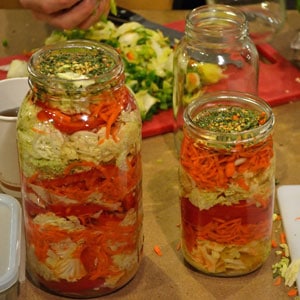
Vegetable Fermentation Made Easy
- Chop or grate vegetables.
- Lightly salt the chopped veggies (add more as necessary for taste) and pound or squeeze until moist; alternatively, soak the veggies in a brine solution for a few hours.
- Pack the vegetables into a jar or other vessel, tightly, so that they are forced below the liquid. Add water, if necessary.
- Wait, taste frequently, and enjoy!
It doesn’t matter if you have one or a dozen veggies, the above recipe works. Add spices, herbs or edible flowers and experiment. You will be surprised at just how tasty almost everything comes out.
Now that we have the basics down, let’s look at how to handle that bumper crop of hot chiles and sweet peppers. These, along with tomatoes, are one of the most expensive vegetables to buy in the store, but taste so much better out of your garden. It is an absolute crying shame to let any of these go to waste!
Let’s look first at a hot fermented chile sauce, much like Sri Ra Cha or “Rooster Sauce” as it’s called after the rooster on the bottle. The only ingredient ratio to keep in mind is the chile to garlic. Don’t go crazy on the garlic, as it gains pungency as it ferments and can throw off the overall flavor.
A note on the salt – use anything but Iodized salt, as this will cloud the color of the brine and can leave a metallic aftertaste.
Homemade Fermented Sri Ra Cha Sauce
- 1 Lb Ripe red chiles – Jalapeno, Serrano, Cayenne, Beaver Dam, or Concho
- 2 Cloves garlic, peeled
- 2 Tsp Real Salt, kosher salt or pickling salt
- 2 Tbs Palm sugar or 1 Tbs light brown sugar
- 1/4 Cup Apple cider vinegar
- Optional: 1/4 Cup fish sauce in place of vinegar. Use Vietnamese for a stronger flavor or Thai for a milder one.
- Optional: Tapioca starch for thickening
- Remove the stems from the chiles, leaving the green “cap” where the stem meets the chile. It adds a unique flavor during fermentation.
- Chop the chiles and garlic lightly, using a food processor if needed until mixture is largely chunky. Do not process too much, just minimally.
- Add chile mixture to a half-gallon Mason jar or other non-metal container. Sprinkle salt in while packing chiles. Pack down with a wooden spoon or spatula. Add just enough water to submerge mixture and cover with a dish towel secured by the ring.
- Ferment for a month, more or less as taste dictates. Taste about every week to see when it is “done” for your tastes. You will see how the flavor changes with time. Keep chile mixture submerged and remove any mold that forms on top by lifting it out with a spoon, fork or spatula.
- When the fermentation is finished, liquefy in a blender or food processor. Strain out the seeds and pulp with a cheese-making cloth and let hang for a few hours or squeeze to get all the liquid out. Discard the pulp and seeds. Heat the liquid on low heat, adding the sugar and vinegar or fish sauce and stirring them in.
- Once the sugar, vinegar or fish sauce are melted in you can lower the heat and reduce the sauce to the consistency you like or use a little tapioca starch to thicken it, much like using corn starch. Tapioca will add just a touch of sweetness, won’t be bitter and is GMO free. Let cool and bottle.
- Store in the refrigerator.
Will keep for 6 months or more, but you’ll eat it long before then!
Recipe notes: Wait until the chiles are fully ripe and red, as they will have the most complex flavor profile and yield the tastiest sauce.
Use the general ratio listed to scale up or down to suit your particular needs at the time.
Now let’s look at a larger batch with more ingredients and a completely different flavor.
Sweet and Spicy Fermented Pepper Sauce
- 3 Lbs Ripe red chiles, much the same as above
- 1 Lb Ripe sweet bell peppers – Jupiter, Melrose, or Lipstick
- 1/2 Lb Onion
- 2 heads of garlic, cloves separated and peeled
- 1 1/2 Cups Palm sugar or 1 cup brown sugar
- 3 – 5 Tbs Real Salt, kosher salt or pickling salt
- 1/4 Cup apple cider vinegar or fish sauce for additional flavor
- The procedure is much the same as for the above recipe. Chop the chiles, sweet peppers, garlic and onion.
- Submerse in a suitable container, pack down with a wooden spoon and cover with water. If using a large, open container it may help to use a plate on the top weighted down with one or two heavy-duty freezer Zip-lock bags filled with a brine solution of 3 Tbs salt to 1/2 gallon water. This way if the bags do spring a leak, you don’t dilute the brine of the fermentation. This also allows the bubbles to get past the plate and bags without building up pressure.
- Ferment for a month, tasting weekly.
- Liquefy in a blender, strain out the pulp and seeds.
- Heat on low and add sugar and vinegar or fish sauce.
- Thicken if desired.
- Enjoy!
Now you have the basic foundation of how to make some incredibly delicious chile or sweet fermented pepper sauce. You can go from mild to shockingly hot and experiment with different spices and amounts of complementary vegetables to add their flavors. You will quickly become something of a hero to your family and friends once they taste your unique sauces!
This is an incredibly versatile chile sauce with loads of flavor and just a touch of heat. It is my adaptation of the incomparable Mole Coloradito Oaxaqueno from Susanna Trilling in her “Seasons of My Heart” cookbook that we’ve featured before. (Mole is pronounced “Mole-lay”!)
This makes a sauce that is 95% of her Mole, but I prefer to make a very large batch as it is a project to do and doubling of the recipe doesn’t take much more time to make. Then you have this cache of amazing flavor that spices up any dish with no extra time but lets all of the flavor and work shine through. It is a wonderful basis for enchiladas, nachos, stews, soups, sloppy Joe’s, burritos or even spooned over eggs in the morning. I like to add about half tomato sauce by volume to make a great sauce that is smooth and mellow with the taste of the chiles but none of the bite.
Colorado means “red” in Spanish, usually referring to a deep brick type of red, so coloradito is “little red”. We’ll give you the recipe first, then walk you though the preparation in photos so you can see the stages and progression. These chiles can easily be grown in your garden for most of North America, or at a well-stocked Mexican grocer. For the Mexican chocolate, Ibarra is a well-known brand that is available almost everywhere. If you really want to take the flavor to the next level, look at Taza Chocolate. It is stone ground in the traditional Mexican village tradition and has a flavor that is absolutely to die for, not to mention being fair trade and traceable to the source. You can see all about how your batch was made by entering the batch number into their website!
Homemade Chile Coloradito Sauce
- 18 Ancho chiles
- 21 Guajillo chiles
- 25 Pasilla Bajio/Chilaca chiles
- 10 Concho chiles
- 1 Chipotle chile en adobo
- 5 Black peppercorns, whole
- 2 Cloves, whole
- 1 Star anise, whole
- 1 Allspice, whole
- 1 Piece Mexican cinnamon, about 1 inch long
- 1/2 Tsp Cumin, whole
- 1/4 Tsp Coriander, whole
- 1 Head garlic, cloves separated
- 1 Medium onion
- 1 Lb ripe tomatoes, quartered
- 1/2 Tsp Mexican oregano, dried (Can substitute Marjoram if needed)
- 1 Plantain, ripe
- 1 Tbs raisins
- 5 Almonds, whole and unpeeled
- 1/2 Cup sesame seeds
- 2 Bars Mexican chocolate – 6 oz total
- 3 Tbs Coconut oil or sunflower oil
- 1 1/2 Qt homemade chicken stock
- Salt to taste
There are 3 steps to this recipe: processing the chiles, processing the spices and processing the tomatoes, onions, plantains and seasonings.
Some cooks will stem and seed the chiles while still dry, toasting the pieces. Others will toast the chiles whole, then soak them to soften the skins and remove the stems and seeds.
- Bring 2 quarts of water to a boil. Meanwhile, heat a dry comal, griddle or a cast-iron frying pan over low heat and toast the chiles on both sides for about 5 minutes. Toast the Anchos a bit slower and on a lower heat because of their thicker skins. Toasting them blisters and loosens the skins and gives off a rich chile aroma. It may be best to toast them in smaller batches so the pan or comal is not crowded. You need room to move and turn the chiles in the pan.
- Remove the chiles, place them in a large bowl with the hot water. Cover or weight the bowl with a plate to keep the chiles submerged. Soak for about 20 minutes to fully soften the dried skins. If chiles have been stemmed and seeded, puree in a blender using as little of the chile water as possible to make a thick paste, usually about a cup. If chiles have not been stemmed and seeded, do this first, then puree in blender. It is best to do this in small batches to not overload and overheat the blender, as the chile puree is quite thick. Depending on your blender, you may have a smooth paste at this point, or you may have some small pieces of skin. If skin pieces are present, pass the puree through a food mill or sieve to remove the skin pieces. Set aside.
- After processing the chiles, heat the dry comal, griddle or cast-iron frying pan over medium heat and toast the peppercorns, cloves, allspice, cinnamon stick, cumin and coriander until they release their aroma. Stir the spices constantly to prevent burning and to monitor the toasting process. Set the spices aside.
- Grill the garlic and onion on the dry frying pan, turning often until they become translucent. They may stick a bit, but keep turning. Puree the spices, onion and garlic with 1/2 cup of the chicken stock. Set aside.
- Heat the cast-iron frying pan to medium and cook the tomatoes and oregano with no oil until the condense, usually about 10 – 15 minutes. They will give off their juices, then start to condense as the juices evaporate. Once condensed, set aside.
- Heat 2 Tbs of the oil over a medium heat in a cast-iron frypan and fry the plantain until brown, about 10 – 12 minutes. Remove from the pan, add raisins and fry until plump, about 3 minutes. Remove and set aside with plantain. Fry the almonds until light brown, about 4 minutes. If needed add a little additional oil, but the amount should decrease with each ingredient until the almonds are almost being dry-fried.
- Puree the plantain, raisins and almonds in a blender with 1 1/2 cups chicken stock until smooth.
- Heat frying pan over low heat, add 1 Tsp of oil and gently fry the sesame seeds until just turning brown, about 6 – 8 minutes, stirring constantly. Remove, cool and grind in a spice grinder or food processor.
- In a heavy stockpot, at least 6 quart capacity, heat 1 Tsp of oil until almost smoking on medium-high heat. Add chile puree and cook, stirring constantly. It will splatter, but keep stirring until heated through. Once heated, lower heat to medium-low and cook for about 20 minutes, stirring frequently. When chile puree starts to thicken add tomato mixture, lower heat to low and cook another 15 minutes, stirring to keep from sticking or burning. Then add onion and spice mixture and stir well. Add pureed plantain and sesame mixture and stir well. Cook a further 10 minutes, stirring constantly to keep from sticking.
- If you are making a larger batch and freezing some, add 2 cups of chicken stock, stir in well then add the chocolate and stir constantly. Once the chocolate has dissolved, add the salt, stir in well. Reduce heat to a slow simmer and let cook for 10 – 15 minutes, stirring frequently to avoid sticking. It will be a thick sauce, ready for freezing in jars. Let cool, then ladle into mason jars leaving an inch gap at the top. Will keep in the freezer for up to a year.
- If you are making the batch to use fresh, add 5 cups of chicken stock to thin the sauce, then add the chocolate, stirring constantly. Once the chocolate has dissolved, add the salt. Lower the heat to a slow simmer and let it cook down for at least 30 minutes, stirring occasionally. It should coat the back of a spoon, but not be much thicker when done.
Makes about 8 servings.
Recipe Tip! It doesn’t take much longer to make double the recipe and freeze for an easy, delicious dish later!
This may sound complicated or a lot of work, so we will walk you through the process and show you what each step looks like. It is a good day’s worth of work, but it can be broken up into a couple of days if you don’t have the time to make it all in one day. Once you taste the results, you will immediately see why it is worth the effort to make a large batch!
In the first photo, we are toasting two of the different chiles and dry frying the onion and garlic in another pan. We have learned to save a lot of time by combining a couple of steps at once. The Ancho chiles are in the back with the Pasilla Bajio or Chilacas in front.
These are the chiles after toasting, soaking and being stemmed and seeded. Most of the work happens right here, to get to this stage. After this everything is roasting and toasting, then using a blender to puree everything into a sauce. To give a sense of scale, this bowl is over 18 inches across!
Into the blender with the chiles! We have a Vita-Mix blender that is a real blessing with big projects like this. It stands up to the thick sauce without overheating, but we still need to process all of the chiles in batches. We usually fill the blender about 1/3 full with chiles and add just enough soaking water to make a thick paste. Please notice the gloves, I use them when working with chiles for extended periods of time to keep me from itching my eyes with a chile-infused finger!
It is easy to see why the name of “colorado” is applied to this sauce – look at that beautiful rich brick red color! My mouth was watering for most of the time after we pureed the chiles as the kitchen was filled with their aroma.
There is not too much volume lost from the soaking stage to the pureed stage. This is the same bowl after we’ve finished pureeing all of the chiles.
Next up is toasting and grinding the spices and seasonings. We used a smaller cast-iron pan to toast the spices and release their aromas.
A molcajete is what we use simply because we have one. It is great for grinding spices and really working them to release their flavors and aromas. A food processor or blender can do much the same with less effort.
A few minutes later, here is what the ground spices look like, ready to be mixed into the chile mixture. At this point we’ve also pureed the onion and garlic and mixed it into the chile sauce.
Now it’s time to mix it all together! This photo helps to show the scale of everything, as the whisk is almost a foot long and I’ve got my hand completely wrapped around it to work all of the purees and spices together.
After everything is mixed together and cooked at a slow simmer, we put it up in jars to freeze for later. We use pints, as this gives a generous amount of sauce without being too much after a couple of days. We leave about an inch or little more of space at the top to allow for expansion in the freezer.
All done except the clean-up! This particular batch made 17 pints of scrumptious chile sauce, with just a bit left over for the next morning’s eggs. This will give us almost a year’s worth of chile sauce.
A close-up of the color and texture of the finished product. Well worth the work!
Risotto is a wonderful Italian dish made from rice. Some of the best Italian rice is harvested at the beginning of October around Verona, in the north-east of Italy. One of the most famous areas is Isola della Scala, just south of Verona. Isola della Scala is often called “Città del Riso” (city of rice) because it is surrounded by large rice fields.
It has been a center of rice production in the Veneto region since the 17th century. You can imagine the wealth and history of risotto dishes from this area! Once a year immediately after the rice harvest the Fiera del Riso (Festival of Rice) takes place during the months of September into October. This event features many culinary contests and historical exhibitions that inspire visitors. The rice festival is, of course, not only an event for education and watching but also for tasting – hundreds of thousands of different risotto recipes are served during the event. This past event was the 44th annual festival with just over 500,000 people visiting!
Here is a representative risotto recipe from the region. Many variations can be made from this simple basis; a vegetarian status is achieved by omitting the ham, the flavors of different cheeses will make the dish entirely different and a different selection of herbs will change the direction yet again. Start with the basis to get a feel for what flavors you like and branch out from there. Soon you will have a comfortable “feel” for how to make this, and start to make your own “family recipe”.
Risotto Alla Veronese
For the broth:
- 2 Tbs of extra virgin olive oil
- 2 celery stems, and a few leaves, coarsely chopped
- 1 onion, coarsely chopped
- 1/2 bunch Italian parsley, coarsely chopped
- 2-3 new carrots (or baby carrots), coarsely chopped
- 1 kohlrabi or Japanese turnip, sliced – it adds a nice touch of sweetness
- 1 1/2 quarts of water
- 10 peppercorns, cracked
- 1 or 2 bunches of sculpit leaves
- Coarse sea salt to taste
- Heat the olive oil in a pan and cook the celery, carrots, kohlrabi, onion, and parsley for 2-3 minutes before adding the water.
- Add the peppercorns, bring to a boil, cover and then simmer for about 15 minutes.
- Add the sculpit and simmer another 15 minutes.
- Turn off heat and let sit, but keep warm.
For the rice:
- 1 onion or small bunch of green onions or 2 – 3 shallots
- 1 – 2 cloves garlic, minced
- 2 Tb olive oil or butter
- 1 small whole sprig of fresh rosemary
- 3 cups of risotto rice (Vialone nano)
- 1/2 Cup Soave or other dry white wine
- 6 cups vegetable broth from above
- 1 /2 Lb Prosciutto or Parma ham, sliced into thin strips
- 1 bunch of sculpit leaves, finely chopped
- 2 handfuls of Grana Padano/Parmigiano Reggiano (or half/half with Pecorino Romano for a more intense flavor)
- Knob of well chilled butter
- Drizzle of olive oil and freshly ground black pepper
- Coarse sea salt to taste
- Fresh ground pepper to taste
- Heat the olive oil in heavy large pot over low heat. Add rosemary and sauté for 2 minutes, until fragrance is released. Remove rosemary and discard. Increase heat to medium, add the chopped onion, green onions or shallots along with minced garlic and sauté with a pinch of sea salt until just tender, about 4-5 minutes. Onion should just turn glossy.
- Add the rice and stir for about 2 minutes. When the rice starts to turn translucent in 5 – 10 minutes add the wine and stir, then put lid on pot until absorbed, about 1 minute.
- Stir in 1 cup of the warm broth and simmer until it is absorbed with the lid on, stirring frequently. Cook until the rice is almost tender, adding broth 1/2 – 1 cup at a time and stirring often, allowing each addition to be absorbed before adding the next, about 15 – 25 minutes.
- Add the finely chopped sculpit leaves, Prosciutto or Parma ham, stir well for one minute and turn off the heat.
- Stir in the Grana Padano/Parmigiano and the butter. Let the risotto rest for five minutes.
- Season with salt and fresh ground pepper.
Serves 6-8
Recipe Tip! This can easily be made vegetarian by simply omitting the ham at the end, or reserving a portion without the ham.
I grew up eating this green chile stew, or as we simply called it – green chile. Mention green chile in most places in the Southwest, and people will understand that you are talking about a bowl of stew, made with green chiles, herbs, sesonings and usually pork. We would make a huge batch of it in the fall, roasting, peeling, seeding and chopping upwards of 50 pounds of the Hatch New Mexican green chiles on the first day. The next day we would make the recipe in huge kettles on the stove to serve at Thanksgiving, Christmas and celebrations at the end of the year. What we didn’t eat immediately we would freeze for the coming year. Thanksgiving just wasn’t really complete without a bowl of green chile on the table, to be ladled over the turkey, mashed potatoes or in a bowl on the side to be savored all by itself. Christmas was much the same. That green chile was something to be looked forward to each time we took it out of the freezer for that night’s dinner.
We learned the foundation of this recipe from an old family friend from a small town in the state of Chihuahua in Northern Mexico. She grew up poor, so her family grew and raised almost all of their own food, including chiles that were used in almost all of their cooking. The flour and oil is used to make a roux, or thickening sauce that gives the dish a nutty flavor as a backdrop for the chiles and meat to take center stage. It takes a bit of time to make, so make a lot to freeze for later. It doesn’t take any extra time to make more, especially if you aren’t roasting, peeling, seeding and chopping the chiles yourself. You can order them directly from companies such as Biad Chile Company and get them delivered to your door, or go to your local farmer’s market where there will probably be a propane powered chile roaster spinning away, creating fresh roasted chiles right before your eyes.
This recipe will give you highly tasty, mild green chile. You can spice it up with hotter green chiles, or with some varieties of hot red chiles as you like. Green chile is ubiquitous in the Southwest, every family has their own take or twist on the basics, so no two are alike. In Santa Fe, you can go from one restaurant to another directly across the street and the tastes will be noticeably different, but delicious.
Here’s where the story takes a little jag. Last year we raised Navajo Churro sheep for the first time. After we got them back in little white packages, we tried them in this recipe, as we had run out of pork. It turned out to be one the best tasting green chiles that I had ever eaten. The Churro has just the right flavoring that pairs beautifully with the chiles to make an outstanding dish. Home or locally raised pork is also excellent, as it has much more flavor than commercially raised supermarket pork.
Serve with a garnish of chopped cilantro and a swirl of sour cream if you want to dress it up a bit. Warm tortillas are a great accompaniment. Give it a try and let us know what you think!
Old Time Green Chile Stew
- 1/2 cup flour
- 1/2 cup oil – olive, coconut or vegetable
- 2 – 3 medium onions, chopped
- 4 – 6 cups water
- 2 – 3 lbs Navajo churro lamb or home raised pork cut into bite sized pieces
- 5 lbs Hatch mild green chiles, roasted, peeled and diced
- 2 heads of garlic, peeled and sliced
- 1 Tbs fresh ground black pepper
- 2 Tsp salt
- 1 Tbs whole cumin seed, roasted and freshly ground
- 1 Tsp whole coriander seed, roasted and freshly ground
- 1 Tbs Mexican oregano, lightly toasted and freshly ground
- 1 Lb fresh tomatoes or 1 16 oz can of chopped tomatoes (optional)
- 2 – 3 medium potatoes, diced (optional)
- Before starting, have onions, lamb/pork, green chiles and 2 cups water prepared and ready at hand.
- In a heavy stock pot, preferably cast iron, heat oil over medium heat. When oil is warm, add flour and brown to make a roux. Stir constantly with a spatula, reaching all parts of the bottom of the pan to keep flour from burning. The mixture will bubble and foam as it starts to brown, then settle into a smooth consistency. The color will change from white to an old copper penny color and the odor will go from flour and oil to a roasted aroma. Be careful not to burn the flour, as you will need to start over. If in doubt, stop browning at a slightly lighter color.
- To stop the browning process, add the onions and 2 cups water. It will hiss and steam as you add them, stir mixture well to cool roux and brown the onions. When onions have started to brown, add lamb/pork and brown.
- Add chiles and remainder of water, stirring well. While chiles start to simmer, roast cumin and coriander in small skillet over medium heat until they release their toasted aroma and add Mexican oregano at end to lightly toast. Grind them in mortar and pestle or food processer.
- Add herb mixture to chiles, along with garlic, salt and black pepper.
- Stir mixture well, reduce heat to a low simmer and check on every half hour or so until meat is tender and flavor has mingled well.
- If desired, tomatoes and potatoes can be added at start of simmering for a different flavor profile.
Makes plenty for a large dinner and enough to freeze 6 – 8 quarts.
Recipe Tip! This is a very mild “heat” with great flavor, but can be modified by using hotter chiles to suit your spice tolerance.
Nasturtium pods, also called seeds or buds, are hot like peppers when they are mature, green and plump. They also make an incredible pickled condiment that is considered better than capers in many sauces and salads. I’m looking forward to using them in an old favorite capanata spread recipe that relies on capers for its distinctive flavor. Nasturtium pods will initially release a sulphurous odor when brined, but the resulting flavor is outstanding. Heirloom Nasturtiums are very prolific and fairly hardy.
Here is a family recipe that has its roots in Eliza Smith’s 1727 cookbook, The Compleat Housewife. It comes to us from the excellent book The Joy of Pickling by Linda Ziedrich.
Pickling salt is -simply put- fine, pure granulated salt. Grocery stores label it “canning and pickling salt”, health food stores call it “sea salt”. It is not table salt, which contains iodine and several other stabilizers and anti-caking agents that can ruin your pickles appearance.
Pickled Nasturtium Pods
- 4 1/2 Tbs pickling salt
- 3 Cups water
- 1 Pint fresh, green and plump nasturtium pods
- 4 Whole cloves
- 1 Pinch unground mace
- 1/4 Nutmeg kernel
- 1 Slice of horseradish, about 1 1/4 inches diameter and 3/8 inch thick, cut into thin strips
- 1 Shallot or large green onion
- 1 Cup white wine vinegar
- Dissolve 1 1/2 Tbs salt in 1 cup water, and then pour brine over nasturtium pods. Let stand at room temperature for 24 hours.
- Drain, make fresh brine as above and repeat. Repeat again for a third time. This initial process will take 3 days, each day needing about 5 minutes of your time.
- On the fourth day, drain the pods and put them in a jar with cloves, mace, nutmeg, horseradish and shallot.
- Cover well with vinegar, cover jar tightly and let stand at room temperature for at least a week.
- After opening jar, store in refrigerator.
Give these a try and let us know what you think, or if you already use them in some special recipes, please share them with us!
Hortopita is a savory pie that is stuffed with horta, or edible wild greens such as dandelions, chard, kale, and lamb’s quarters- commonly called spring greens. Horta directly translates as “grass” in Greek, but refers to about 80 different greens growing all over the country. It’s delicious alone (sauteed with lemon and olive oil) but obviously much more savory when feta and filo pastry sheets are used. Hortopita is a cousin of Spanakopita–layers of crispy filo dough stuffed with cheesy, leafy spinach greens.
Here are two separate, distinct recipes for you to try. The first one comes directly from Greece, just outside of Athens and is a modern take on a traditional family recipe used for many years. The second one is from FarmPlate, a wonderful website that connects folks looking for great, locally produced food with those folks that make just such foods. They are “a revolutionary online community that connects farmers, fishermen, foragers, food artisans, restaurants, markets, distributors and foodies everywhere. Our searchable directory of 40,000+ business listings across the country, networking tools and reviews make it fun and easy to find and enjoy real foods near you.”
These are large recipes, as they are usually made daily at the local bakery in large sheets, to be sectioned out for individual portions. Make a large batch, as it will be gone in a couple of days!
Traditional Greek Hortopita
- 2-3 spring onions, chopped
- 1/2 Cup extra virgin olive oil
- 2 lb of various wild or spring greens, chopped (spinach, kale, arugula, sorrel, Swiss chard, fennel, leeks – only the white part – and any other spring green you like)
- 1 package country style filo dough
- 2-3 eggs whisked together
- 4 oz feta cheese
- Salt and ground pepper
- Preheat oven to 350 F.
- In a big pan heat olive oil and saute the onions till they are tender.
- Add the greens stirring continuously till they are wilted, about 4-6 minutes.
- Remove from the heat, add the egg, feta cheese and ground pepper. Careful with the salt since feta cheese is already salty!
- Evenly spread 1 Tbs olive oil in a baking pan, then set the filo dough and spread the mixture on it. Cover with the other filo, carefully close the edges and score the surface slightly (the steam from the cooking of the mixture needs to escape).
- Spread water and some olive oil on the surface and bake for 1-1/2 hour in the lower position of the oven till the filo takes on a golden color. Remove and let set up for about 15 minutes before slicing and serving.
Makes 3 to 4 servings
Hortopita from FarmPlate
- 1/2 cup uncooked white rice
- 4 tablespoons extra virgin olive oil
- 4 small or 2 large leeks, rinsed well and thinly sliced
- 2 tablespoons currants
- 1 teaspoon ouzo, or 1 tablespoon balsamic vinegar or white wine
- 2 tablespoons chopped fresh parsley
- 1/4 teaspoon dried oregano
- 1/4 teaspoon dried thyme
- 1/4 teaspoon salt
- Very generous grinding of black pepper
- 3 pounds assorted tender greens, such as baby spinach, arugula, beet greens or Swiss chard, stemmed and washed
- 1 teaspoon grated lemon zest
- 3 tablespoons butter
- 1 package filo dough, thawed
- 8 ounces feta cheese
- Pinch of grated nutmeg
- Preheat oven to 400 F.
- Cook rice by adding rice to small pot and covering with 1 cup water. Turn heat on high and bring water to gentle boil. Stir rice well, turn heat down to medium-low. When water level drops to top of rice, stir once more, cover with lid and reduce heat to very low. Rice will be done in 5-7 minutes.
- While the rice is cooking, heat 2 tablespoons of the olive oil in a large skillet over medium heat. Add the leeks and fennel, sauteing until they begin to soften, about 5 minutes.
- Stir in the currants then add the ouzo, vinegar or wine and cook for a few seconds to evaporate.
- Stir in the parsley, oregano, thyme, salt and a generous grinding of pepper. Transfer the leek/fennel mixture to a bowl and set aside.
- Return the skillet to the heat. Add two big handfuls of greens and cook, stirring, until they wilt. Transfer to a colander. Wilt the remaining greens in the same manner. Squeeze the excess liquid from the greens then coarsely chop. Sprinkle with the lemon zest and some pepper.
- Melt the butter and stir in the remaining 2 tablespoons olive oil. Lightly brush the inside of a 12-inch tart pan with a little of the oil/butter mixture.
- Unfold the filo dough and cover loosely with a kitchen towel to prevent it from drying out.
- Place 1 sheet of dough in the pan, pushing it into the corners. There will be about 3 inches of overhang. Brush the dough lightly with butter/oil. Add another filo sheet, placing it at a 45º angle to the first sheet. Brush that one as well. Continue stacking (at an angle) and brushing the sheets until you have used 8 sheets to line the pan.
- Spread the rice in the pie bottom. Top with the leek mixture followed by the greens. Crumble the feta and sprinkle oil on top. Season with black pepper and a grating of nutmeg.
- Top with 8 of the remaining filo sheets, stacking and brushing them as you did the bottom layer. Trim the overhang to 2 inches beyond the rim of the tart pan.
- Roll the edges inward, tucking them under. Brush the top with more butter/oil. Score the top into serving pieces using a very sharp knife.
- Bake for 15 minutes. Lower the heat to 350ºF and bake for 45 minutes longer. Let rest about 15 minutes before slicing and serving.
Makes 6 to 10 servings
Recipe Tip! The feta cheese is naturally salty, so be careful how much salt you add during preparation.
Catania is an old city on the south-east coast of Sicily, fronting the Ionian Sea. During the Renaissance, Catania was Sicily’s most important cultural, artistic, and political hub due in part to its major seaport. In 1434 the first university in Sicily was founded and today it is one of the main economic centers of the island and an important hub of technology and industry.
Cantine del Cugno Mezzano, located on the Via Museo Biscari is one of the chic restaurants in the old downtown that are reviving the ancient farm cuisines and elevating them to fine dining status. What is notable is that the flavors need no “freshening” or “elevating”, only the surroundings and atmosphere is needed to create the fine dining experience. The old recipes and locally sourced farm-grown ingredients are what make the flavors so memorable. The chef drives out to the surrounding countryside every weekend and goes from farm to farm on a well-established routine buying the foundations for the next week’s dishes.
This is a substantial and deeply satisfying, yet not heavy winter soup that has sustained farm families and farmhands for many generations. It is eaten during the cooler weather in Sicily on the farms, but is in demand year round in the restaurants. Get the best quality sausage possible, as it is the foundation of the flavors here. The smoked sweet and bittersweet paprika will add an intriguing depth of flavor to the soup, with the oregano backing them up. Another option to broaden the flavor profile is to use a home made beef stock instead of the water in the lentils, or split it in half. This freezes well to provide a delicious backup when time is short or plans change during the week.
Add some thick slices of fresh artisan peasant bread with butter and a good beer for a taste of what our ancestors ate after a long workday in the fields!
Zuppa Di Grano e Lenticchie
- 1 Cup Wheat berries
- 1 Cup Lentils
- 6 Cups water
- 3 Oz Italian sausage, diced
- 2 Tbs extra-virgin olive oil
- 1 medium onion, diced
- 1 stalk celery, diced
- 2 medium carrots, sliced thickly
- 5 Oz Swiss chard or Kale leaves, stems removed, rinsed and coarsly chopped
- Sea salt and freshly ground pepper to taste
- Optional seasonings- 1/8 Tsp each of smoked sweet and bittersweet paprika, 1/2 Tsp oregano
- Dollop of sour cream
- In a small heavy bottomed pot cover the wheat berries with plenty of water and bring to a boil over medium-high heat. Once boiling, remove from heat, cover and let sit for 1 hour. Drain and reserve the cooking water.
- Using a cast-iron pot or flame proof clay pot, add lentils and cover with 6 cups of water and bring to a boil over medium-high heat. Once boiling, reduce heat so that the lentils are just above a simmer until they just start to turn tender, about 15-20 minutes.
- While lentils are simmering, heat the oil in a heavy skillet over medium heat. Add the sausage and onion and sautee for 5-7 minutes, until the onion just turns golden. Lower the heat, add the celery and carrots and cook until the carrots are just tender, about 10 minutes. Add the Swiss chard or Kale, stir in and cook until dark green and just wilted, about 3-5 minutes.
- Add wheat berries and sausage and vegetable mixture and stir well. Season with salt, pepper and optional seasonings if using. Add enough wheat berry cooking water to cover slightly and bring back to a boil, immediately reduce heat to a bare simmer and heat soup through, about 3-5 minutes.
- Add small dollop of sour cream if desired
Makes 6 servings
French sorrel is known as “lemonade leaf” and has been prized for its nutritional and culinary qualities for centuries. In many climates it will nativize.
Oaxan Sopa de Tomate con Albondigas
One of my favorite Mexican cookbooks is titled Seasons of My Heart, by Susana Trilling. Susana was a chef and owner of a restaurant in New York City and also owned a very successful catering business. She left all of this to pursue her ethnic roots in Mexico around Oaxaca, sharing the food, culture and traditions of the cooking of the region. She wrote this cookbook to showcase the native foods that are not well known outside the region. Seasons of My Hearthas become hard to find but is well worth pursuing once you do find it.
Today I’m going to share a recipe called Albóndigas, or meatball soup. Many people are familiar with Albóndigas as a clear broth with a couple of meatballs in it as an appetizer or first course. This particular soup is more rural in nature, with the broth enriched by the onions and tomato puree. Many people are are amazed to find that this is “Mexican food”, as it doesn’t have the characteristic emphasis on chiles and heat that most Americans are accustomed to seeing in Mexican food. This is one of those perfect hearty winter soups that has an abundance of rich and savory flavors. Make extra, as this soup keeps exceptionally well and will prove to be very popular.
Oaxan Sopa de Tomate con Albóndigas
For the meatballs:
- 1 1/4 pounds ground sirloin
- 1 teaspoon freshly ground black pepper
- 1/2 teaspoon salt
- 1/4 cup sunflower or vegetable oil
- 1 teaspoon mild chile powder
- 1 teaspoon ground cumin
For the soup:
- 4 cups beef stock
- 1 1/2 medium white onions, finely chopped
- One large leek, halved lengthwise and thinly sliced
- 1 tablespoon finely chopped garlic
- 1 1/2 teaspoons ground black pepper
- 3 bay leaves
- 5 cups thick tomato puree
- 1 1/2 teaspoons salt
- 1 tablespoon finely chopped fresh parsley
- 1 tablespoon finely chopped garlic chives
- In a medium bowl, mix the ground beef with the pepper, salt, cumin and chili powder.
- Shape the mixture into tiny meatballs about the size of black cherries.
- In a heavy 4 quart stockpot, heat the oil over medium to high heat and brown the meat balls on all sides, for about 2 minutes, in small batches without crowding them.
- Remove from the pan and set aside.
- If there is extra oil in the stock pot, remove it, leaving about 2 tablespoons.
- Fry the onions and leek until they’re soft over medium heat, 4 to 6 minutes.
- Add the garlic and season with the pepper and bay leaves.
- And the beef broth, tomato puree, and meatballs.
- Lower the heat to a slow simmer, cover, and cook for 1 1/2 hours.
- Add the salt, parsley and chives and cook 5 to 10 minutes longer.
- Serve with garlic toast.
During the winter months, or cold weather, this is the type of soup that is very easy to make when you’re cooking out of your freezer with ingredients that you have prepared beforehand. Making beef broth or beef stock is somewhat time consuming, but does not require constant attention and can be made in large batches, saving time later on. Likewise, making tomato puree from extra tomatoes when your garden is in the height of production gives you a rich, fresh tomato taste in the dead of winter.
Please give this soup a try, and let us know what you think!
I’ve often wondered why the Armenian Cucumber was always the preferred choice of cucumber for my grandmother. She said it was the best tasting cucumber and that it was “burpless” which was important to her. I know sometimes folks are very sensitive to eating raw cucumber because of that burping issue.
What causes the burping? Some foods are more prone to producing gas, such as onions, celery, and cucumbers. Foods high in fiber have more of the “gas” forming characteristics which can cause that burping issue. But back to the Armenian Cucumber, which is really a melon (Cucumis melo var. flexuosus) is why we don’t burp. There is a funny group of melons that botanically are melons but are much similar in characteristic to the cucumber (Cucumis sativus).
I wanted to know more about this Armenian Cucumber, so I referred again to Fearing Burr’s Field and Garden Vegetables of America to read up on the Snake or Serpent Cucumber (AKA Armenian Cucumber).
Though generally considered as a species of cucumber, this plant should properly be classed with melons. In its manner of growth, foliage, flowering, and in the odor and taste of the ripened fruit, it strongly resembles the muskmelon. The fruit is slender and flexuous; frequently measuring more than three feet in length; and is often gracefully coiled or folded in a serpent-like form. The fruit is sometimes pickled in the manner of the Common Cucumber, but is seldom served at table sliced in its crude state. It is generally cultivated on account of its serpent-like form, rather than for its value as an esculent (edible). Well-grown specimens are quite attractive; and, as curious vegetable productions, contribute to the interest and variety of horticultural exhibitions.
Interesting that in 1865 not much was mentioned about the “burpless” quality that the Armenian Cucumber is known for today. I would have to say it is much tastier than just an ornamental for the local county fair!
Give this recipe a try with your Armenian Cucumbers!
Peasant Salad
- 2 tomatoes cut in wedges
- 2 cucumbers, sliced
- 1 small red onion, sliced
- ½ c olive oil
- ½ c red wine vinegar
- 1 Tbsp lemon juice
- Dried oregano, to taste
- Salt and ground black pepper, to taste
- ½ c Kalamata olives, chopped
- ½ c crumbled feta cheese or chopped anchovy fillets (optional)
- Combine tomatoes, cucumbers and onions in bowl.
- Whisk olive oil with vinegar, lemon juice, oregano, salt and pepper. Add to vegetables; toss to coat. Top with olives.
- If desired, add feta or anchovies.
Makes 4 servings
Recipe Tip! Redmond Salt is the best tasting salt to use with fresh garden vegetables. A sprinkle on a fresh cut tomato or on a hard-boiled egg is heaven.
Carrots are an ancient standard in the garden, one that is introduced to many of us as kids when we are first playing and learning in the garden. Short season, hardy, fast-growing and delicious just out of the ground, carrots are a hit with everyone, and one of the top sellers for every seed company.
What else to do with fresh carrots than slice them and add to the salad, especially an over abundance from an enthusiastic planting? There is always pickling and canning, but at the height of fresh garden produce, I don’t want to think of canning quite yet. Here are a couple of delicious ways to enjoy the sweetness of carrots combined with other flavors that go well with Spring and Summer dinners.
Pan Braised Carrots with Parsley and Rosemary
This unusual but satisfying side dish will be a hit with your dinner guests. Equally at home beside a burger, freshly grilled beef or Salmon steak or roast chicken. This can be done on a stove or outside on the barbeque in a cast iron pan. For extra panache, add grated Parmesan cheese just before serving. Fresh Fennel, sliced in 1 inch chunks can be added for an increased depth of flavor.
1 Cup Beef broth (can use mushroom base or vegetable base instead)
1 Lb Small carrots, sliced into 2 inch pieces
1 Tsp Honey
1 Tbsp Butter
2 Tbsp Fresh parsley, minced
2 Tsp Fresh rosemary, minced
Juice of 1 orange
In heavy saucepan bring broth and honey to a boil, reduce heat to a simmer. Add carrots, butter, rosemary and 1 Tbsp parsley. Cover and simmer for 5 minutes. Remove carrots to a warm covered plate, add orange juice and continue to simmer broth until reduced to about 2-3 Tbsp- should be about 15 minutes. Once reduced, add carrots and remaining parsley, toss to coat and serve immediately. If desired, add grated Parmesan or hard grating cheese to top just prior to serving.
Serves 4
Herb Marinated Carrots
These tangy, savory carrots are addictive! There is a train-wreck of flavors, from the sweet crunchiness of the carrots to the lemon juice, mustard and rosemary coming together into an unexpectedly delicious combination. Best if marinated overnight, but will work well with 6-8 hours in the refrigerator. Use as an appetizer or side dish. Will hold their own with almost any flavors.
1 Lb Full sized carrots, sliced or cut into matchsticks
2 1/2 Tbsp Lemon juice
1/2 Tsp Stone ground mustard
1/4 Cup Olive oil
2 Green onions, chopped
1 Tbsp Fresh parsley, chopped
1 Clove garlic, minced
1 Tbsp Fresh rosemary, finely chopped
Freshly ground Salt and Black Pepper, to taste
Blanch carrots in boiling water for 3-4 minutes or until just barely tender, then drain. Combine lemon juice, mustard, olive oil, onions, parsley, garlic and rosemary in a jar with tight fitting lid. Shake vigorously to mix well. Pour over warm carrots, season with salt and pepper and refrigerate a minimum of 6-8 hours or better yet, overnight.
Makes about 3 cups
There are many ways to use the remains of the Thanksgiving turkey. Of course, having a delicious herb-roasted and smoked turkey will leave fewer leftovers, but there are bound to be some no matter what. One of my favorites from childhood is Scrapple, but that is the subject of another post and recipe.
It has been colder here, so soups have been on the menu. Roasted bone and carcass broth based soups are always very satisfying and nutritious this time of the year. I wanted to share a different take on the re purposing of the noble Thanksgiving turkey in the role of a rich, hearty and extremely satisfying soup. This recipe uses pumpkin, as there is usually some left from making the pies, but any hard shell winter squash will work beautifully. The best flavor will be from a pie pumpkin, not a carving or field pumpkin. Taking advantage of the abundance of vegetables used at the Thanksgiving feast, this soup can be as rich and complex or as simple and straightforward as you wish. You can also make a couple of soups, as once the roasting of the carcass is done there are endless routes one could go with this soup. Roasting the turkey carcass after it has been cooked intensifies its flavors and prepares it for creating the rich stock, which is the base for partnering with the creamy smoothness of the roasted pumpkin.
Thanksgiving Turkey and Pumpkin Soup
For the Stock-
1 Turkey carcass- whole with some meat and skin left on it, or with wings
2 Onions– quartered
3-5 Medium carrots
5-6 Lbs. Pumpkin, sliced open and seeds removed
1 Bouquet Garni- 2 Dried Bay leaves, 1 small bunch Flat Leaf Parsley, (preferably fresh, dried is ok), 2 sprigs fresh Thyme (dried is ok)
1- 6 Oz. can of tomato paste
Roast the carcass on a large roasting pan or heavy baking sheet at 450F for 1 hour. It should be medium brown. Add the quartered onions, carrots, potatoes and pumpkin and roast for 1/2 hour. Other root vegetables can be roasted as well for different flavor dimensions. The vegetables should be soft, slightly darkened and well roasted, while the carcass should be nicely browned and almost falling apart. Browning the carcass and vegetables in the oven before simmering them in a pot gives the stock a more pronounced flavor and deeper color. Scoop out pumpkin, use 1 Lb now, reserve the rest. Place everything in a large heavy stock pot. Deglaze the roasting pan by adding 2-3 cups of water to the pan on the stove, bring to a simmer and scrape the browned bits loose with a wooden spoon. A cup of red wine with the water to deglaze will add an incredible depth to the flavor. These bits are very concentrated in flavor, called the “stock foundation” by the French. Add to stock pot, along with Bouquet Garni and tomato paste, which adds color and depth of flavor. Cover carcass completely with water- about 10-12 Qts and slowly simmer very gently for a minimum of 10-12 hours. During the first few hours, fat and proteins will rise to the top. For a clear stock- skim the top, but it is not absolutely necessary, as the fats will collect at the top when cooled, and the proteins will remain in the stock.
Once the stock has simmered, allow to cool. Skim fat from top and strain out bones and Bouquet Garni. Mash up remains of vegetables. Bone the turkey, leaving the soft cartilage and bits of meat. You should have a very thick stock, with no whole vegetables showing.
For the Soup-
Remainder of roasted pumpkin
1-2 Lbs leftover Turkey, shredded
6-8 Cups Turkey stock
4 Tbs Butter, preferably unsalted
2 Medium Onions, chopped
4-6 Garlic cloves, minced
2-3 Medium potatoes, cut into medium cubes
15 Fresh Sage leaves, coarsely chopped
Freshly ground Salt and Black Pepper
Fresh cream if desired
In heavy stock pot, preferably cast iron, melt butter over low heat and slowly cook onions for 15 minutes, then add garlic for 5 minutes. Add remainder of roasted pumpkin and bring to a simmer. For a smoother soup, puree pumpkin, onion and garlic mixture now. Return to pot, add potatoes, Turkey and stock. Slow simmer for 30 minutes. Potatoes should be tender. Add ground Salt and Pepper and chopped sage leaves, reserving some for a garnish. Finish simmering for 10 minutes to blend flavors. Add splash of cream to each bowl and serve hot with fresh bread.
This is always a hit, so I make extra. Enjoy and let us know how yours turns out!
Here is another great recipe that takes advantage of the abundance of fresh vegetables out there now. This is an easy, foundational salsa recipe that is extremely tasty just as it is, but also lends itself very well to experimentation with whatever fresh vegetables you have available. Everything is roasted to bring out the fullness of the flavors, and to help them mingle better. I’ve been able to do an acceptable substitute in the winter with fresh frozen chiles from our garden, and canned Italian plum tomatoes!
This is one of those salsas that just grabs you by the taste buds and gets your attention. No matter if it is mild or hot, you keep coming back for “one more bite”, because it just tastes so good. When having guests over, a batch rarely lasts through the evening, when it’s at the height of its warm, rich goodness. Best cooked outside, this lends itself beautifully to doing fresh quesadillas, queso fundido, burgers or all three in succession on the grill, along with plenty of cold beer and good friends. Watching the late summer sun going down after a hot day and enjoying the salsa along with other great food is one of the memories that will be brought up many times.
I like using several kinds of chiles, some mild, medium and hot to bring more depth of flavor to my salsas. I will start picking the mild ones, fewer of the medium, and less still of the hotter ones. This builds a base of flavor first, then heat. Don’t worry if it looks like you’re making tomato soup when you start roasting the tomatoes, everything will turn out just fine…
Roasted Fresh Garden Salsa
2 Lbs fresh tomatoes-diced. Plum tomatoes are best, but use what is fresh- a couple of different kinds will give more depth of flavor! Dicing will help remove some of the excess juice.
3-4 Ripe red bell peppers– diced
10-15 Various Chiles to taste for heat- de-seeded, de-veined and diced
3-4 Ears fresh sweet or roasting corn– cut from the cob. About 1-2 Cups
5-6 Cloves garlic- sliced in 1/8 inch slices
1-2 Cups cooked Black beans (optional)
1 Tsp whole Cumin
1/2 Tsp whole Coriander
1/4 Cup Extra Virgin Olive Oil
1 Tsp salt
1/2 Tsp fresh ground black pepper
Splash of Balsamic Vinegar
You’ll need a couple of large, heavy, shallow pans for roasting- preferable cast iron, as it retains the heat well and is easy to keep at the best temperature for roasting vegetables. The grill or outdoor stove is the best place to do the cooking, as the heat stays outside, and you get to enjoy the late afternoon! A couple of large bowls to hold the roasted vegetables and a large food processor or blender will be needed after everything is roasted.
Heat the pans to a medium heat, add the tomatoes to one pan, the bell peppers and corn to another, and if you have a third pan- the Chiles to that one. Let them roast until their skins start to turn dark. The skins should be a little black in spots and starting to loosen from the fruit. This can take up to a half hour depending on the heat of your grill or stovetop. Stir and turn with a wooden spatula occasionally. You will see some sticking, especially with the tomatoes- this is ok. When the Chile skins are starting to turn dark, add the garlic to that pan. Remove the veggies when they are fully roasted and have dark skins with a few black spots on them. The corn should have a dark yellow color to it. Put them all together into a large bowl and cover.
Toast the cumin and coriander in a small heavy pan over medium heat for 2-5 minutes, until they release their aromas. You will see the seeds start to darken and release their aromas- move the pan off of the heat for a second or two, then return to the heat. Continue this until the rich toasted aroma tells you they’re ready. Grind in a mortar and pestle or spice grinder to a coarse ground consistency.
Add the vegetables to the food processor in batches if needed and process with a chopping blade until a chunky consistency is reached. Do not over process to a smooth or fine consistency- you will lose flavor. Repeat until all the vegetables are processed, and return to a large serving bowl. Add ground spices, Olive Oil, salt and ground black pepper. Add splash of Balsamic Vinegar and mix well. Taste and adjust salt and pepper if needed.
Serve warm with chips, or in and on top of fresh hot quesedillas or accompanying queso fundido with chips.
Chicken Maque Choux is one of the most wonderful, rich and flavorful chicken dishes there is. This has been one of our favorites for years, and is absolutely best cooked at the end of summer, when the corn is rich and ripe with plenty of other fresh vegetables available to round out the chicken and sausage. Fresh vegetables are essential for the complementary flavors, but you can do this with frozen and canned ingredients in the winter. This is one of the reasons to freeze and can your own produce, to be able to capture the taste of late summer in the middle of winter…
“Maque choux” is a Cajun word meaning a dish smothered with fresh corn and tomatoes. This is a stew dish in consistency and needs some liquid in the bottom of the bowls. Provide soup spoons and plenty of fresh bread, as the liquid in the bowls is delicious!
This is the traditional recipe, using the entire chicken, but one can use breasts or thighs if needed. We use Olive oil to cook in, and cast iron as it holds the heat better and adds more flavor, I believe. This is one recipe where the freshest ingredients will really shine. Fresh, local chicken will make this a dish that everyone will remember.
The sausage is optional, as it does add to the richness of the dish. For a lighter dish, use just the chicken. Who cooks Cajun in a lighter way though? Seriously, though, the chicken by itself is very memorable!
Chicken and Sausage Maque Choux
1/4 Cup Vegetable oil or Olive Oil
2 Small fryers, cut up (Can cut into bite sized pieces if desired)
1/2 Pound hot Cajun or Italian sausage links, cut into 1/2-inch slices (Optional)
4 Cups fresh corn cut off the cob, with cob liquid reserved (substitute 16 Oz frozen sweet corn if needed)
2 Tbs fresh heavy cream
3 Cups chopped onion
1 Cup chopped green pepper
2 large Beefsteak tomatoes, coarsely chopped (substitute Italian canned plum tomatoes if needed)
1/4 Tsp dried Thyme
1/4 Tsp dried Basil (or 1/4 cup chopped fresh basil)
1 Tbs finely minced fresh Parsley
2 fresh Thyme sprigs
1/2 Tsp cayenne, or to taste
3 Tsp salt
1 Tsp freshly ground Black Pepper
2-3 Tbs milk, if needed
Heat oil in a heavy 8-10 Qt pot or kettle over medium heat. Season chicken with salt and pepper and brown in hot oil, turning often to brown evenly. When chicken is just starting to brown, add sausage if using, turning often. Reduce heat to low once sausage has started to cook and chicken is almost browned. Add onion and cook for about 15-20 minutes. Add corn, corn liquid and cream, mixing thoroughly. Add green pepper, tomatoes, herbs, salt and pepper. Lower heat until mixture is just barely simmering, cook for 30-45 minutes. Check progress about every 15 minutes. Chicken and sausage should be very tender, chicken will be almost falling off bones. If dish is too soupy, uncover pot for last 15 minutes. If it is becoming a little too dry, add milk as needed.
Serve hot with fresh bread in soup or gumbo bowls. Make a full recipe, as everyone will go back for more, and it gets better the next day.
Today we have a new recipe that will work just about anywhere. I’ve used it when entertaining at home, at a friend’s house when cooking a shared dinner party and even when camping off road in our Land Rover! It lends itself to being cooked outside, which keeps the house cooler, and somehow increases the flavor…
It takes a bit of time, as this is a slow pan roast recipe, but is easy and you can do other prep or cooking while this is roasting. Total cooking time is around 30-45 minutes. Plan extra, as the flavor from the slow roasting is tremendous, and people will go back for more. That’s good, as this is real and healthy food! This is a perfect counterpart to barbecued chicken or burgers on a warm Spring evening. If you increase the vegetables and add warm fresh bread, this can be a light and healthy dinner in itself.
The eggplant must be fresh, as it can be bitter otherwise. Fresh means picked that day. If fresh is not available, leave it out. If you want an extra flavor, don’t peel the eggplant. This is the perfect showcase for fresh grown, heirloom ingredients, as the flavors will really shine. The ingredients are roasted in this order to bring out their flavors, as well as mingle them with the others. It is worth the time to do it in order!
Mediterranean Pan Roasted Vegetables
Serves 4-6
12 oz potatoes, cut into 1/2 inch cubes with skin on (Red potatoes are preferred)
2 bell peppers- any color, cut into 1/2 inch squares
1 medium red onion, diced into 1/2 inch squares
1 small eggplant, peeled and cut into 1/2 squares (Only use fresh eggplant to avoid bitterness)
3 or 4 cloves garlic, sliced
4 Tbsp extra virgin olive oil
2 Tbsp balsamic vinegar
1/2 tsp dried basil
1/2 tsp dried oregano
1/2 tsp fresh chives
1 tsp fresh rosemary, finely chopped
Salt and freshly ground pepper to taste
A large cast iron pan is best, but a heavy bottomed pan that retains heat well will also work.
Heat pan on medium heat, until thoroughly warm. A pan that is not heated all the way through will cause food to stick. Whisk balsamic vinegar, 2 Tbsp olive oil, basil, oregano, chives and 1/2 tsp rosemary together and set aside.
Add 2 Tbsp olive oil to pan, coat pan well and add potatoes, coating with oil in pan. Roast for 10-15 minutes, turning occasionally until they start to soften. Add onion and bell peppers, along with half of the rosemary and roast for 10 minutes, turning as well. Add eggplant and garlic, roasting for 5 minutes. Drizzle herb/oil/vinegar mixture over vegetables, stir well to coat and continue roasting until potatoes are tender, about 10 minutes more. Serve hot or let cool and store in refrigerator for next day to let the flavors set up and mingle.
Here are a couple of recipes that use fresh herbs- that you should soon have growing in your garden!
The first is the classic Basil Pesto. Make extra, freeze in small amounts for use later. We just finished using the last batch in a dinner that tasted like the height of summer. The second is a basic, classic tomato based pasta sauce that is not only easy to make, but lends itself to endless variations using what is fresh and on hand at the time.
You can easily have a fresh, incredibly tasty dinner on the table in 30 minutes with either of these recipes!
Basil Pesto Sauce
2 Cups fresh basil leaves, washed
3 cloves fresh garlic, mild flavored
2 Tbsp pine nuts or walnuts
1/2 Cup extra virgin olive oil
Salt to taste
1/2 Cup fresh grated aged Parmesan or Pecorino cheese
Makes about 1 cup.
Place all ingredients except grated cheese in food processor and puree until smooth, usually about 1-2 minutes. Add in grated cheese, pulse till mixed well.
Add to soups for a bright and fresh flavor, use as a sandwich spread or add to hot freshly cooked pasta for heavenly pesto pasta.
As basil production increases, make large batches to freeze into small single serving containers for use in the winter when you want a taste of summer. Most people think of pine nuts as the only nut to use, but experiment with other nuts including almonds and sunflower seeds for different flavor combinations. Use different basils as well, for the different flavors that they will bring.
Fresh Tomato Basil Sauce
1 Medium red onion, minced
1/2 Cup dry white wine
Pinch crushed red pepper flakes
3 Medium fresh tomatoes, peeled and chopped
1 Tbsp olive oil
1 Tbsp Balsamic vinegar
1 Tsp sugar
1/2 Tsp salt
1 Tbsp tomato paste
1 Cup fresh basil, chopped
Slow cook onion in wine over low heat in heavy bottomed sauce pan for 10-15 minutes, until liquid is reduced to a few tablespoons.
Add pepper flakes, tomatoes, olive oil, sugar, salt, Balsamic vinegar, and tomato paste. Simmer for 15-20 minutes, stirring occasionally until sauce is thickened.
Add basil, then remove from heat. Let sit for a couple of minutes to infuse basil flavor into sauce, then serve over fresh hot pasta.
Makes about 3 cups. Can be easily frozen for a quick, healthy and tasty dinner.
You can easily add fresh carrot thinly sliced, fresh oregano, different types of basil, fresh fennel sliced thinly, or whatever sounds good at the time. Experiment with different flavor combinations, use what is fresh and available at the time for new and great tastes.
This is a great dinner for family or friends, and it doesn’t have to be Sunday. A whole roast chicken makes for an impressive tableside presentation followed by a delicious meal and the tender, tasty leftovers can be used for several other dishes, if there are any left!
For faster, more even roasting, cut the backbone out of the chicken with poultry shears or heavy duty kitchen shears. This allows the bird to lay flat in the roasting pan. Keep the backs in a freezer ziplock until you have several, then make chicken stock with the giblets, diced onions and celery, aromatic herbs such as savory, rosemary, thyme, salt and pepper and a bay leaf in a couple quarts of water. Bring to a boil, then simmer for a minimum of two hours, longer is better.
Pair this with some fresh homemade biscuits and you’ve got a proven winner! We found a great restaurant in the little town of Boulder, Utah called Hell’s Backbone Grill that makes the absolutely best biscuits that we’ve ever tasted! They are easy and quick to make and are positively addictive. We always make a double batch if we want any for the next couple of days. You can use the hot oven for both roasting the chicken and baking the biscuits.
Make sure to include plenty of vegetables, as they roast up well and balance out the rich roasted chicken flavors.
Herb and Vegetable Roasted Chicken
3-4 Lb chicken
1 lemon, halved
Fresh rosemary
Fresh thyme
8 cloves garlic, peeled and crushed
2 Tbsp butter, softened
Salt and fresh ground black pepper
4 small red onions, halved
8 small potatoes, halved
4-6 medium carrots
4 medium parsnips, peeled
Extra virgin olive oil
Heat oven to 450F. Rinse chicken, pat dry with paper towels. Place chicken in a large roasting pan or skillet. Cast iron is best. Squeeze lemon juice to cover chicken then put lemon halves, rosemary, thyme and 4 cloves of garlic into cavity. Rub chicken with butter, sprinkle with salt and pepper. Arrange remaining vegetables around chicken and brush with olive oil, season lightly with salt and pepper.
When oven is hot, roast for 15-20 minutes, then bast chicken with pan juices. Reduce heat to 375F and continue to roast for about 45 minutes more, basting every 15-20 minutes until skin is crisp and golden. Remove from oven, cover with lid or foil for 10-15 minutes (while biscuits are cooking) and let rest before carving. When removing chicken, reheat oven to 450F. By the time you are ready to bake the biscuits, the oven will be at temperature.
Black Powder Buttermilk Biscuits
This is our all time favorite biscuit recipe! You must have two things to be successful here- a hot oven and cold dough. These are made and bake quickly, so get everything ready before you start.
3 Tbs cornmeal
2 1/2 Cups flour
1 1/2 Tsp salt
1/2 Tsp baking soda
1 Tsp baking powder
1/2 tsp course black pepper
1 Tsp sugar
1 stick (1/4 Lb) butter- cold- cut into 1/2″ chunks
1 Cup buttermilk or substitute 1 cup milk with 2 tsp lemon juice
Adjust rack to middle position of oven, lightly oil cookie sheet or use a nonstick spray. Sprinkle 2 Tbsp over surface.
It’s best to use a food processor for the next two steps, then lightly knead the dough by hand or in a stand mixer. It makes for better biscuits!
Add flour, salt, baking soda, baking powder, pepper and sugar in food processor bowl, pulse 5-7 times with cutting blade to mix. Next, add butter chunks and run until mixture resembles coarse crumbs. This can be done with 2 knives and some patience. Transfer to stand mixer bowl.
Using low speed, fold mixture in while slowly pouring buttermilk over top. Mix well until dough is sticky and moistened through, with no dry patches. Turn dough onto lightly floured worktop, using floured hands to prevent dough from sticking. Using knife or bench scraper, cut dough in half and stack one piece on top of the other. Flatten with rolling pin, but don’t over do it. Repeat cut, flatten and stack for 3 more times. Add small amounts of flour necessary to keep everything from sticking. Dough will be very moist- as it should be.
Transfer dough to cookie sheet. Roll to about 1 inch thick, then cut into squares about 2×2″. Sprinkle with remaining 1 Tbsp cornmeal. Bake until golden brown, about 12-15 minutes.
Serve with the roasted chicken and enjoy!
This is a wonderful winter chowder, warming and hearty to chase away the cold winter blues. It uses readily available winter ingredients- potatoes, onions, garlic and carrots, along with some frozen corn. Homegrown frozen sweet corn will be the best, but a good quality frozen sweet corn will work.
I use this as a starting base for experimentation and new directions. This is perfectly delicious, however, just as it is! Lobster, crab or shrimp makes this an excellent seafood chowder. Fresh sausage gives a completely new flavor, especially if it is spicy or smoked. Smoked pork works magic as well. Use your imagination and unique, local ingredients to shape this into a new regional specialty in your area!
Corn and Potato Chowder
Sea Salt, to taste
1 Stalk celery, chopped coarsley
1 Medium carrot, chopped coarsley
1 Sprig fresh parsley, can use dried
1 Bay leaf
5 Black peppercorns
1/4 Lb. salt pork, or smoked pork
3 Medium yellow onions, peeled and diced
3 Cloves garlic, peeled and minced
1 1/2 Lbs. unpeeled red potatoes, cut into 1/2″ cubes.
4 Cups corn kernels- (about 6 ears worth)
3 Cups half and half
Cayenne pepper
Freshly ground black pepper
1 Tbsp. Chicken base- Better Than Bouillon is a great brand
10 Cups water
In a large, heavy stockpot (preferably cast iron) heat the water and mix chicken base. Once simmering, add celery, carrots, parsley, bay leaf and peppercorns. Cover and simmer over low heat for 1 1/2 hours, then increase heat to medium until stock is reduced to about 6 cups, about 10-15 minutes. If using seafood, cook in stock base now, only til just tender and remove for later.
Cook salt pork or sausage in separate heavy pan over medium low heat until crisp, about 20 minutes. Remove, drain and slice. Add to stockpot. In same pan, saute onions and garlic until soft and browned.
Add to stockpot along with potatoes and corn. Simmer on medium heat until potatoes are tender, about 10 minutes. Stir in half and half, cayenne and return to simmer. If using seafood, add now and heat through, about 5 minutes. Season to taste with salt and pepper. Ladle into bowls and serve hot.
Please let us know how you like it, and what adaptations you make!
It has been cold here, much colder than in the past several years, so I’ve been making some great cold weather dinners. Onion soup is one of the classic cold weather dishes- rich and hearty in flavor and aroma. We bought a cazuela at The Spanish Table in Sante Fe this past September, and I love cooking with it. You can use it over a direct, but low, flame on the stove-top. This saves the time of soaking the clay pot, loading it with the ingredients, putting it into a cold oven and then turning it on. The warm up time of the oven greatly increases the cooking time, as the clay pot needs to come up to temperature slowly to avoid cracking. Not so with the new cazuela! It is glazed and has been high fired, so is ready for action. I’ve done several pots of slow cooked beans that are heavenly, as well as some other soups and stews. Today is about the onion soups, though…
For several years now I have faithfully cooked the French Onion Soup recipe from the Le Cordon Bleu Home Collection cookbook, and as you would expect, the results are fabulous. It does take some time and preparation, but the results are wonderful. If you have any desire to learn even a small part of the French traditional cooking, and the techniques and reasons behind the techniques- get this cookbook!
This time, I didn’t have quite all of the ingredients or the time or maybe the inclination to spend over an hour at the stove. So I started looking for a good but tasty alternative to the hallowed French Onion Soup.
And found it in a Southwestern recipe from the Roaring Fork restaurant in Scottsdale, AZ. The premise of the restaurant is “Upscale Campfire Cooking”. In Scottsdale.
The thing that I like is that most of the cooking is done in cast iron. Wonderful stuff, lasts forever and if seasoned correctly can cook anything. I tried it, with some modifications that I’ll share, along with the original recipe so you can make both and see for yourself which you like best. Both are great, with different flavors and different approaches.
Here goes-
French Onion Soup from Le Cordon Bleu Home Collection cookbook.
3 Tbs unsalted butter
1 small red onion, thinly sliced- Rossa de Milano is perfect here
3 white onions, thinly sliced
1 clove garlic, finely chopped
3 Tbs all purpose flour
3/4 cup white wine
6 cups brown stock- (I used Better Than Bouillon– beef flavor.)
1 bouquet garni- (Leek outer wrapper, bay leaf, sprig of thyme, celery leaves, few stems of fresh parsley tied together)
1 Tbs Sherry
12 thick slices French baguette
1 1/2 cups finely grated Gruyere cheese
Melt the butter in a large heavy bottomed saucepan over medium heat. Add the onions and cook for about 20 minutes, stirring often, until caramelized and dark golden brown. This is the most important step, as the color of the onions at this stage will determine the color and the ultimate flavor of the final soup!
Stir in the garlic and flour and cook, stirring constantly for 1-2 minutes.
Add the white wine and stir the mixture until the flour has blended in smoothly. Bring to a boil slowly, stirring constantly. Whisk or briskly stir in the stock, add the bouquet garni and season to taste with salt and freshly ground black pepper. simmer gently for 30 minutes, then skim the surface of any excess fat if necessary. Add the sherry to the soup and adjust seasonings to taste.
To make the croutes, toast the French baguette slices until dry and golden on both sides.
Ladle the soup into warm flame proof bowls and float a few croutes on top. Sprinkle the top of each bowl with Gruyere cheese, place under preheated broiler until cheese melts and turns golden brown. Serve immediately.
Serves 6 as a first course. Double ingredients for main course.
The first thing I would say is to use heirloom, locally grown onions and garlic, as the flavor will be exponentially better- fresher, deeper and with more dimension than onions and garlic that have been grown and shipped halfway across the country, having sat for who knows how long before you bought them. Don’t believe me? Please try it both ways, and let me know!
You will be sold on the first bite of the local soup…
If you haven’t ever tasted truly hand made from scratch French Onion Soup, you are in for a taste treat. It is heavenly on a cold winter’s evening with some fresh made bread and butter on the side, with a glass of wine.
Very satisfying.
Worth the time to make it.
Shiner Bock Onion Soup from The Roaring Fork restaurant, Scottsdale AZ
3/4 cup chopped bacon- smoked is better, imparts a depth to the overall flavor
6 cups finely sliced yellow onions- Walla Walla or Sweet Spanish Utah are great
1 Tsp minced garlic- a robust flavor will stand up to the chiles and beer
1 Tbs finely chopped serrano chile- optional. I used 1 chopped Chipotle en Adobo chile; great flavor and smokieness
3 Tbs butter
1/4 cup flour
1 12 oz bottle of Shiner Bock or light microbrew ale
4 cups veal or chicken stock- again I use Better Than Boullion- chicken flavor
Salt and fresh ground black pepper to taste
Pinch of cayenne pepper
Cook the bacon until crisp in medium hot cast iron pot or heavy deep saucepan. Reduce heat to medium low, add onions, stir well and cover. Cook for 10-12 minutes then add garlic, chile and butter. Stir until onions begin to caramelize, about 10 minutes.
Add flour, stir to thicken and do not allow to stick to bottom of pan/pot. Once flour has blended in, add beer and stir to completely mix in. Increase heat, slowly bring to a boil and add stock. Return to a boil, then reduce heat to low and simmer the soup for 5-10 minutes.
Season to taste with salt and pepper, simmering until the beer has smoothed out and incorporated with other flavors- about 10-15 minutes. Soup should just be starting to thicken. Add pinch of cayenne, stir in well.
Ladle into warm soup bowls and serve immediately.
The flavor of this is completely different, but incredibly delicious. It is easier to make and do something else in the kitchen, as you are not over the pot for most of the time. I used a Chipotle en adobo chile, chopped fine and added some extra adobo for the smoky flavor and it was a great addition. A smoked bacon adds a lot of flavor as well. I doubled the garlic, as it roasts in the onion mixture and mellows its flavor.
Again, a locally grown garlic and onion will make all the difference in the world with both of these soups.
I’m hesitant to experiment too much with the French Onion Soup, as it is an established classic, and also the flavor is so definite and distinct that to start to change it might result in something less than where we started. The Shiner Bock Onion Soup I will most definitely experiment with, as the flavor is wonderful, but almost begs to be taken in a new direction, as the flavor is bold and new.
I could see adding some purple or fingerling potatoes to the mix at the point where the stock is added and brought back to a boil. The texture of the purple potatoes will thicken the soup, as they will cook into it quickly, while the flavor will add a completely new dimension. Fingerlings won’t cook into the soup nearly as much, but will add a nutty creaminess that I think would be amazing. The combination of bacon, onions and really flavorful potatoes would make this pretty much a one dish winter meal with some fresh hearty sourdough bread, butter and a dark beer.
So there you have it, a trans continental journey with the simple ingredients of onions. The flavors are almost as distant from each other, yet perfectly wonderful in each separate way.
Please try these and let me know what you think!
Here’s 3 great heirloom pumpkin recipes that we have used and enjoyed. Too often people think of pumpkin in a strictly Halloween or pumpkin pie way, when there are so many other unique and wonderfully tasty ways to enjoy it. Pumpkin is not only a fall or winter vegetable, but can be frozen or stored in a cold cellar environment for several months, in addition to the traditional canning. Please try these, enjoy and tell us what you think!
Here’s what could come out of your garden for this recipe – Pumpkin, Leeks, and Thyme!
- 3 Lbs pumpkin
- 3 Tbs unsalted butter
- 3 Leeks white parts only-finely sliced
- 2 large shallots minced
- 5 scallions finely sliced
- 1-2 garlic cloves minced
- 2 Tbs fresh ginger minced
- 1 Tbs pureed chipotle en adobo
- 8 cups rich chicken stock- can use 4 cups stock and 4 of water for lighter flavor
- 3 Tbs fresh thyme leaves or 1 Tbs dried
- 1-2 cups heavy cream to taste
- Salt and fresh ground pepper to taste
- Cut pumpkin in half, scrape out and save seeds, peel and cut into 1 inch cubes on heavy cookie sheet or roasting pan. Roast in oven at 400F for 20-30 minutes. If skin is very tough, add 1/4 cup of water to pan while roasting.
- Saute leeks, shallots and scallions in butter in a large heavy pot for 10 minutes.
- Add garlic, ginger and chipotle en adobo, cook for 2 more minutes.
- Stir in the pumpkin, stock and thyme.
- Slow simmer for 45 minutes, until pumpkin is very soft.
- Puree in small batches in blender or food processor and return to pot.
- Add cream, taste for seasoning and add salt/pepper as needed.
Here’s what could come out of your garden for this recipe – Pumpkin, Onions, Chile, Cumin, and Chives!
- 2/3 cup small diced fresh pumpkin
- 1/3 cup small diced tart apple- Granny Smith etc.
- 2 medium red onions diced small
- 1 1/3 Tbs coconut or olive oil
- 1/3 cup Marsala wine
- 1/4 Tsp fresh ground nutmeg
- 1/4 Tsp ground red chile
- 1/4 Tsp fresh ground cumin
- 1/4 cup orange juice
- 2-3 Tbs brown sugar
- 1 Tbs apple cider vinegar
- 2 Tsp minced red jalapeno chile- can use green jalapeno
- 1 Tbs chopped chives
- 2 Tbs roasted/salted pumpkin seeds
- Salt and pepper to taste
- Saute the pumpkin, apple and onion in canola oil in a heavy pan over medium heat until onion is slightly browned.
- Deglaze the pan with Marsala wine.
- Add spices, orange juice and brown sugar, cook over low heat until most of liquid has evaporated.
- Add apple cider vinegar, reduce slightly.
- Remove from heat, add jalapenos, chives and pumpkin seeds.
- Taste for seasoning, add salt and pepper as needed.
Here’s what could come out of your garden for this recipe – Pumpkin, Onions, and Sage!
- 1 small pumpkin- about 5 lbs.
- 4 Tsp extra virgin olive oil
- 6 Tbs unsalted butter
- 2 medium yellow onions finely chopped
- 2 cloves garlic minced
- 4-6 cups chicken stock
- Salt and freshly ground pepper
- 18 fresh sage leaves and 1 cup vegetable oil for frying
- 9 shallots halved lengthwise
- Quarter, seed and peel pumpkin, rub with olive oil and roast on baking sheet in 350F oven for 30 minutes, or until soft. Allow to cool.
- In a heavy stock pot, melt 4 Tbs butter, then brown onions and garlic over medium heat for about 15 minutes, or until onions are soft.
- Add pumpkin to mixture, continue cooking for 5 minutes. Add chicken stock and slow simmer for 30 minutes.
- Puree soup in food processor or blender until just smooth.
- Return to pot, thinning with water if too thick. Keep soup warm on lowest flame and heat diffuser if needed.
- Heat vegetable oil and fry sage leaves until just crisp and drain on paper towels.
- Add to soup and keep warm.
- Drain oil, melt remaining 2 Tbs butter over medium heat and cook shallots until soft and golden, about 15 minutes.
To serve, ladle soup into individual bowls and distribute 3 sage leaves and 3 shallot halves into each bowl.
Freezer Pickles – Easy, Simple, yet Delicious
This is a recipe that Cindy has used for several years and is always devoured at picnics. A lot of people ask for the recipe because the flavor is so outstanding! By freezing instead of boiling the brine a lot of unique flavors come out, as well as the fresh cilantro. It is very easy to do in small or large batches. We have used cucumbers and German Beer radishes, but just about any hard skinned vegetable can be used.
Quick, easy, and absolutely delicious - these pickles will be the hit of your picnic, potluck, or dinner party! Freezing instead of boiling brings out flavors lost to the heat, as well as being the only way we've found of keeping the fresh summer cilantro flavor into the winter.
- 2 lbs. cucumbers thinly sliced
- 2 cups sweet onions thinly sliced
- 3 tbs pickling salt Kosher salt works and tastes great
- 1 whole red bell pepper chopped
- 1 tsp ground cumin freshly ground has better flavor
- 1/4 cup fresh cilantro chopped - homegrown tastes best
- 1 1/2 cups sugar
- 1 1/2 cups cider vinegar
Wash and thinly slice cucumbers - do not peel, then thinly slice onions. There should be about 7 cups.
Toss cucumbers and onions in a large bowl with salt, mixing well to evenly distribute the salt. Let stand at room temperature for 2 - 3 hours, then drain excess liquid but do not rinse.
Combine remaining ingredients in a separate bowl, mix well and pour over vegetables, stirring well to mix. Refrigerate for 8 - 10 hours or overnight.
Pack the vegetables and brine in freezer-proof rigid containers and freeze. We like to use pint jars - they are the perfect size for a picnic or family BBQ. Make sure to leave about 1 inch of headspace to allow for expansion so the jars don't break.
When packing the vegetables, make sure the brine completely covers them to prevent freezer burn and ensure the best flavors.
Freeze for a minimum of 2 weeks to allow the flavors to mature and mingle.
To serve, thaw overnight in the refrigerator and enjoy!
Be prepared to make an immediate, larger second batch!
Use a Cuisinart or other kitchen appliance to slice the vegetables and reduce your prep time to a few minutes!
We've successfully used this recipe with large radishes, cucumbers of all kinds, and yellow beets. Almost any sturdy vegetable - root or otherwise - will pickle beautifully with this recipe.
Making Cilantro Freezer Pickles
Thinly slice your vegetables – we use a Cuisinart or other type of kitchen slicing appliance – making this a 2-minute process!The photos are of two different recipes we did – one with white onions and the other with red ones.
Once your vegetables are sliced, brine them by adding salt to the vegetables and stirring them thoroughly to mix the salt in well. Let sit for a couple of hours – the exact time isn’t important, so don’t worry if it’s 3 hours, they will taste great! Strain out excess moisture from the vegetables, but don’t rinse – you need the salt for flavor and the pickling process.
Next, start the pickling process by mixing the herbs, sugar, and vinegar in a separate bowl, then pour over the brined vegetables. This starts the pickling process.
After refrigerating them overnight, pack yournewly-pickled vegetables into jars or freezer-proof containers. We use pint-sized Mason jars, which are just enough for a family picnic or supper or a BBQ. If there is a larger crowd, we’ll take two.
Leave enough room for the pickles to expand without breaking the jars – about 1 inch, and make sure to cover the vegetables with brine for the best flavor and to prevent freezer burn.
Let the flavors mature and mingle for at least 2 weeks before serving. Thaw in the refrigerator overnight and serve cold.
I’ve never liked eggplant. The taste was bitter but past that, remarkably bland with a similar texture. Not that exciting.
So I decided to grow some this year. This is something I recommend against to my customers- “Grow what you like to eat” is what I advise.
My reasons for growing something that I don’t like are simple; I also don’t like supermarket tomatoes, yet love the ones that I grow. I wanted to try one eggplant to see if it was different than what I had tasted before. It’s the supermarket vs. homegrown argument on a different level. Supermarket tomatoes are merely tasteless, whereas eggplant is unpleasant to me.
The first eggplant of the season was ready yesterday. A medium gorgeously purple beauty, surprisingly light in weight. I pulled the cookbooks out to see what made sense to try that would showcase the flavor of the eggplant and didn’t require the oven on for an hour, or at all. Marcella Hazan came to the rescue once again. She is an incredible chef and writer of the lesser known Italian cooking that most of us have never experienced. You get the recipe, and the reasons for the actions taken in the cooking and why to not shortcut the steps. Flavors are described in detail and reasons behind the techniques are given, something I’ve rarely seen. The stories behind each recipe are compelling as well, something I love from the heirloom seeds.
The recipe I tried is Eggplant Sauce with Bell Pepper, Tomato and Basil. I’ll give it to you at the end. The freshly sliced eggplant was not bitter, but had a slightly sweet flavor that compounded the smell of the fresh eggplant. I salted it according to the directions, which made it sweeter. I chose this recipe as it used more fresh ingredients from our garden. I’ve got some wonderfulGenovese Basil that has an incredible aroma and holds up in cooking. I don’t have the bell peppers or tomatoes yet, so will try it again when another eggplant is ripe.
The overall character is complex and slightly spicy with many individual flavors that come through, yet is in harmony as no single flavor overpowers another. Italian flavor at it’s finest! The flavors are not overbearing, as most common American Italian cooking has become, but are lively and pleasing. This is a lighter dish, perfect for summer cooking, and can be done outside on a grill if one is experienced at outdoor cooking, not just barbecuing. This is a dish I would prep ahead of time to do trail side at the end of a long day exploring the backcountry of Arizona or the Southwest. It’s not hard, but attention and patience are needed to bring the flavors out! The small investment of time is well worth it.
Here’s the recipe:
1 1/2 lbs eggplant
Salt
1 ripe bell pepper (yellow is best, but make sure it’s ripe)
3 Tbs extra virgin olive oil
3 garlic cloves sliced very thin
1/8 Tsp crushed red pepper or to taste
2 Tbs Italian flat leaf parsley- whole leaves, not chopped
1/3 Cup thinly sliced onion
1 Cup ripe fresh tomatoes, peeled and chopped. Canned Italian tomatoes will work.
1/3 Cup dry white wine
6 small basil leaves or 4 large ones, torn not cut into small pieces
6 green olives in brine, quartered
1 1/2 Tbs capers
1 Lb box dry pasta, penne is good choice
Slice eggplant in half. If seeds are dark, or if there a lot of seeds, scoop seeds out. Cut eggplant into 1 inch squares, put into colander rinse in cold water. Salt and let set for 45 minutes. This brings out the bitter liquid if there is any. Rinse again afterwards.
Split bell pepper in half, scoop out seeds and pith, then peel skin with swivel peeler. This removes the bitterness in the skin once cooked. Cut into thin strips.
Warm 3 Tbs olive oil in 10 inch skillet, then add garlic and chili pepper. Increase heat to medium, no more. Stir often just until garlic scent rises, no more.
Add whole parsley leaves. Careful, they will pop and sputter for a couple of seconds. Stir a couple of times, add onion and turn heat to low. Cook slowly until onion is soft. This increases the flavor by cooking slowly, and the garlic flavor is not entirely lost.
Add pepper strips, some salt and cook until pepper starts to be tender. Stir occasionally. You should have some liquid starting to build in the bottom of the pan.
Add eggplant, tomatoes, wine, basil, olives and capers. Stir several times to mix well. Slowly simmer with lid on for 40 minutes, watching liquid level. It should slowly decrease, and have almost no liquid at the end. Add a small amount if it looks dry. Stir occasionally during the simmer. Crack lid if too much liquid is remaining about 15 minutes before the end, or when you put the pasta water on.
Time cooking the pasta so its done just before the sauce, about 7-10 minutes. Toss pasta with sauce, adding 1 more Tbs olive oil and serve hot. Cheese is really not needed, but you can add a small amount of pecorino if you want. Don’t drown the delicate sauce in cheese!
Enjoy and let me know what you think! Please leave a comment!
Restaurant-Style Zuppa Toscana
Based on a popular restaurant starter soup.
INGREDIENTS
- 1 (16 ounce) package smoked sausage
- 2 potatoes, cut into 1/4-inch slices
- 3/4 cup chopped onion
- 6 slices bacon
- 1 1/2 teaspoons minced garlic
- 2 cups kale – washed, dried, and shredded
- 2 tablespoons chicken soup base
- 1 quart water
- 1/3 cup heavy whipping cream
DIRECTIONS
- Preheat oven to 300 degrees F (150 degrees C).
- Place sausage links onto a sheet pan and bake for 25 minutes, or until
done. Cut links in half lengthwise, then cut at an angle into 1/2-inch
slices. - Place onions and bacon slices in a large saucepan and cook over medium
heat until onions are almost clear. Remove bacon and crumble. Set
aside. Note- You can saute the kale at this step for extra richness in its flavor! - Add garlic to the onions and cook an additional 1 minute. Add chicken
soup base, water, and potatoes, simmer 15 minutes. Note- This is where I prefer to add my kale! Russian kale will take the simmer without losing its texture and flavor. - Add crumbled bacon, sausage, kale, and cream. Simmer 4 minutes and serve.
Stir-Fried Kale and Broccoli Florets
Good for an unusual side dish. Can be used for a light fall lunch or dinner starter.
INGREDIENTS
- 1/8 cup extra virgin olive oil
- 7 cloves garlic, sliced
- 1 chile pepper, chopped (optional)
- 1 head fresh broccoli, chopped
- 1 bunch kale, stems removed and chopped
- 1/4 cup sun-dried tomatoes, cut in thin strips
- juice of 2 limes
- salt
DIRECTIONS
- Heat olive oil in a large wok or skillet over high heat. Stir in garlic and chile pepper; cook for 2 minutes, stirring frequently. Stir in broccoli; cook 1 minute. Add kale, and cook 2 minutes, stirring frequently. Stir in sun-dried tomatoes. Pour in lime juice, and season with salt to taste. Toss well.
Pork Tenderloin with Steamed Kale
Amazing showcase of pork and kale. For extra flavor, marinate the tenderloin for a couple of hours, up to overnight.
INGREDIENTS
- 2 limes, juiced
- 1 cup olive oil
- 2 teaspoons dried cilantro
- 1 teaspoon cracked peppercorns
- 1 teaspoon garlic salt
- 1 (1 1/2 pound) pork tenderloin
- 1 pound kale, stems removed and leaves coarsely chopped
DIRECTIONS
- Preheat oven to 350 degrees F (175 degrees C). In a small bowl , whisk olive oil with lime juice. Season with cilantro, garlic salt, and peppercorns.
- Brush the pork tenderloin with three tablespoons of the lime dressing. Wrap in aluminum foil, and place on in a large baking dish. Roast in preheated oven for 30 to 45 minutes, or until a meat thermometer reads 170 degrees. Note- can be slow grilled on indirect heat on a BBQ if the weather is too hot or you want a smoky flavor!
- While the tenderloin is cooking, place kale in a steamer. Cook for 20 minutes, or until tender. You can saute the kale now for a more intense flavor.
- Slice the pork tenderloin into 1 1/2 inch thick slices. Serve on top of the kale. Whisk the remaining dressing, and drizzle over pork and kale. Make sure to serve the kale under and on the side of the pork, don’t just use it as a garnish! It adds a depth of flavor to the pork.
There is some starters for what to do with kale. There are a lot of great bean/sausage/kale recipes that will keep you warm this fall and winter. Please let me know what you think, and share your experiences.
Happy eating!

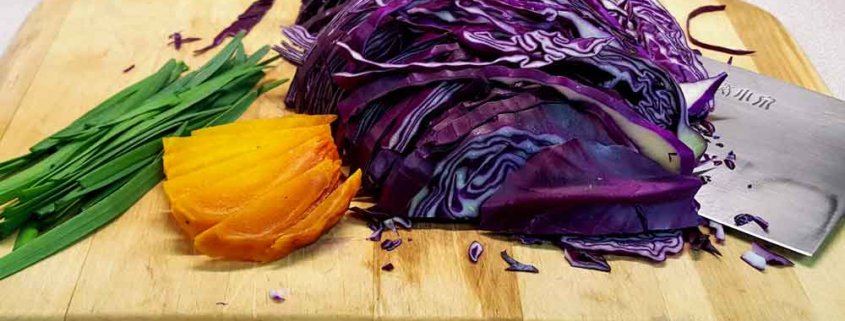 © 2024 Terroir Seeds | Underwood Gardens
© 2024 Terroir Seeds | Underwood Gardens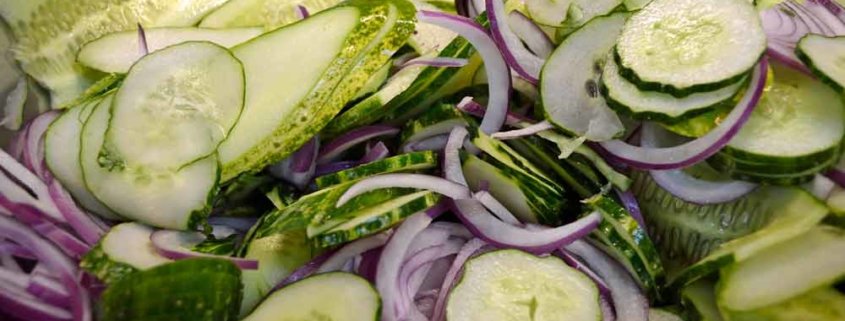
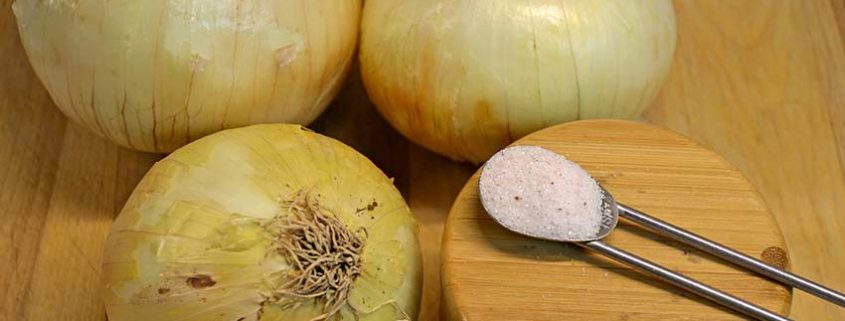




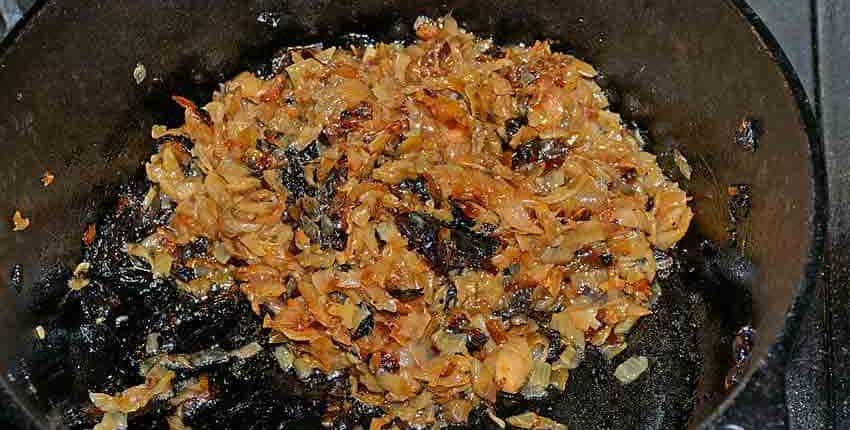
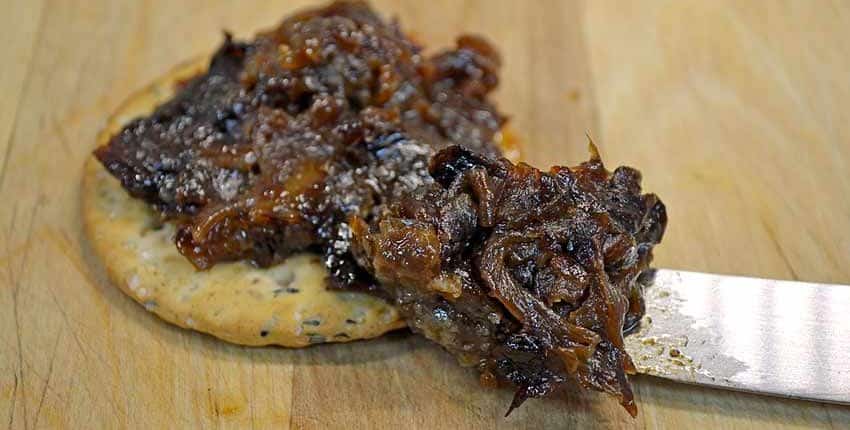
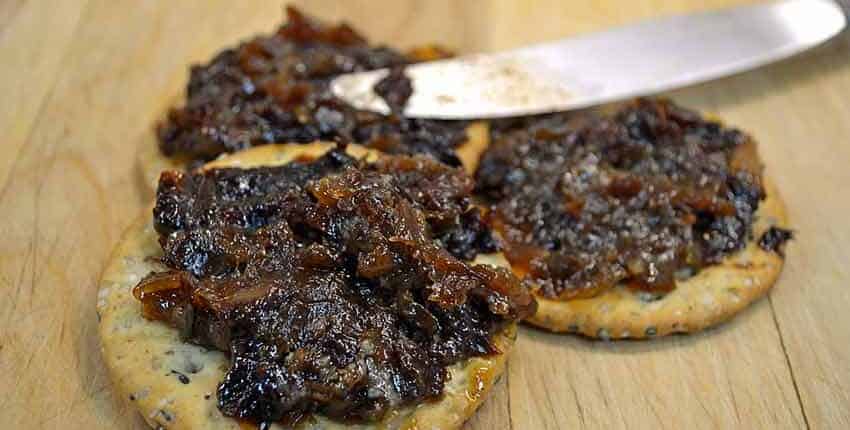


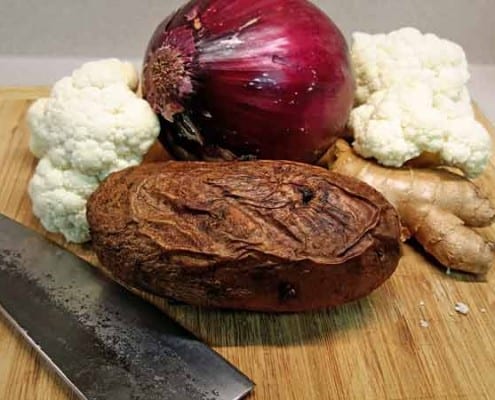
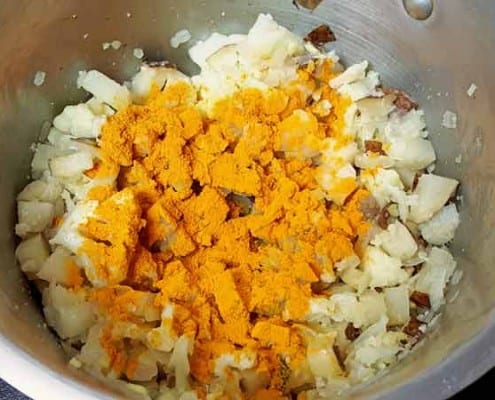



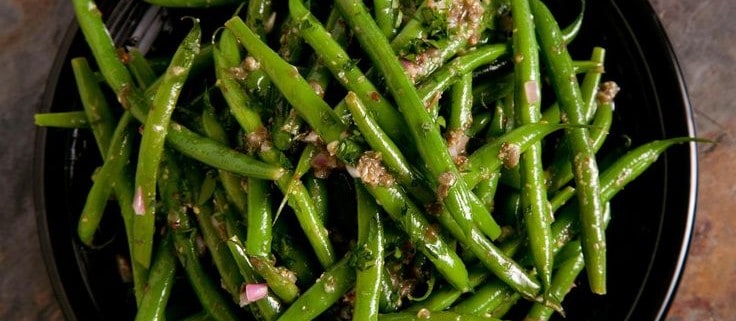

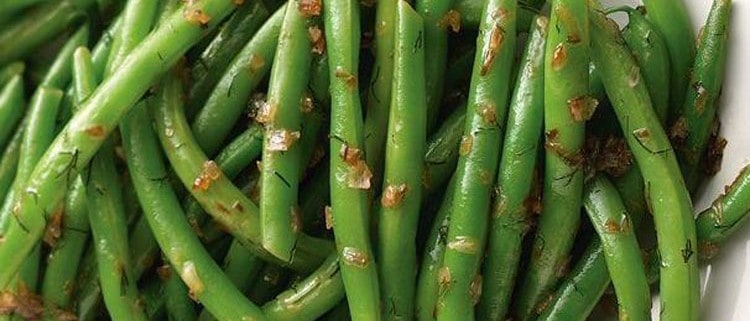






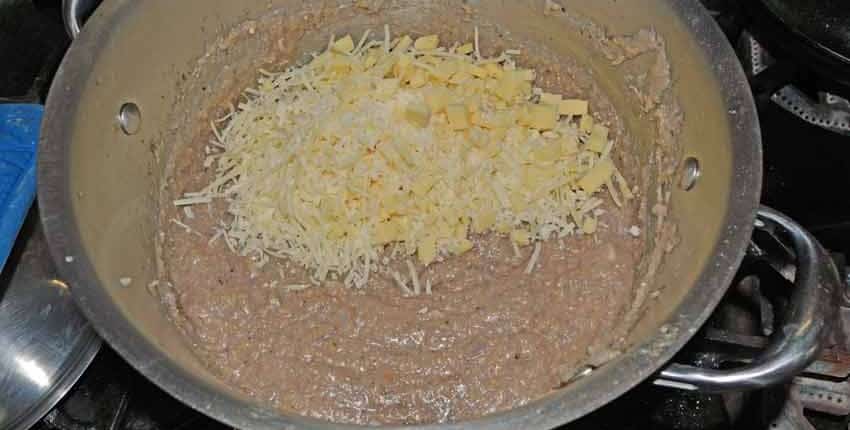

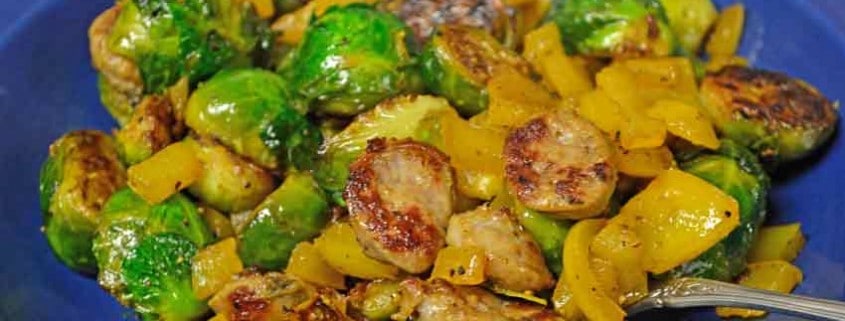

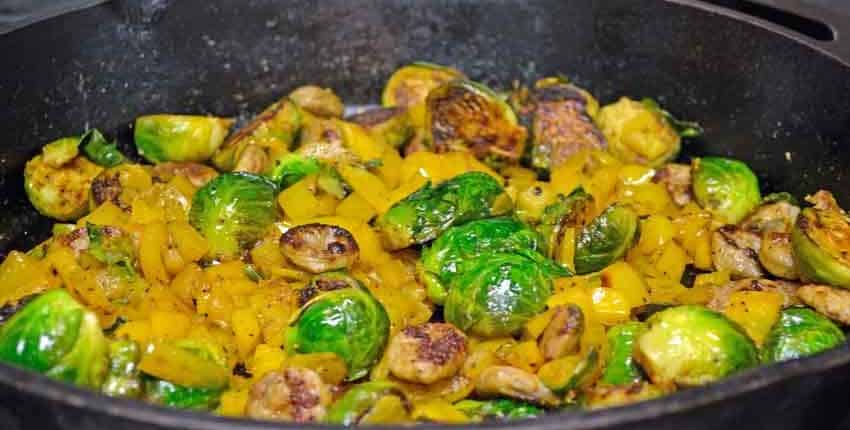
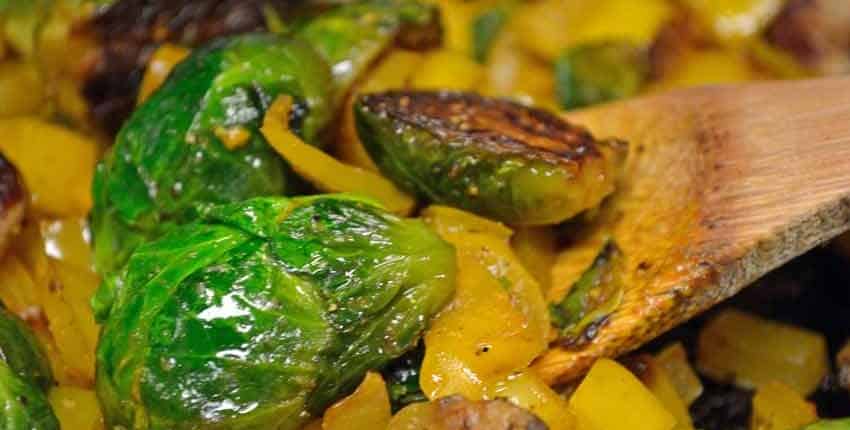

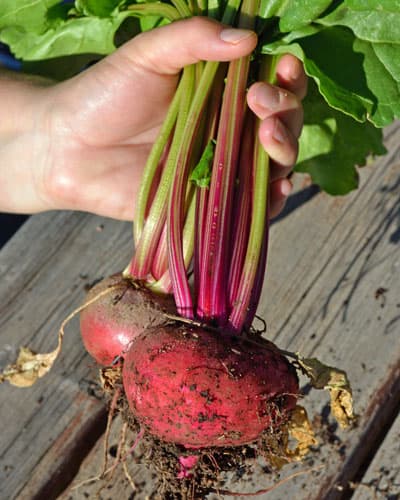
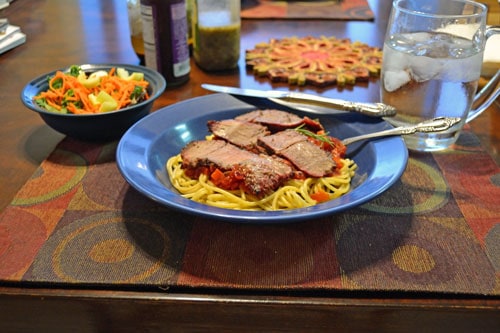


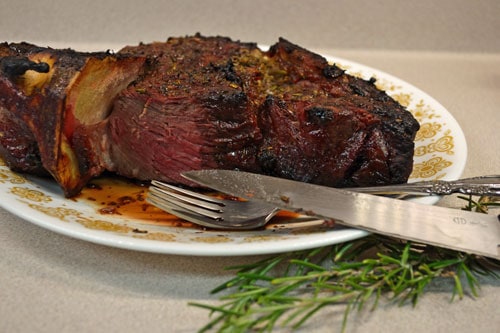
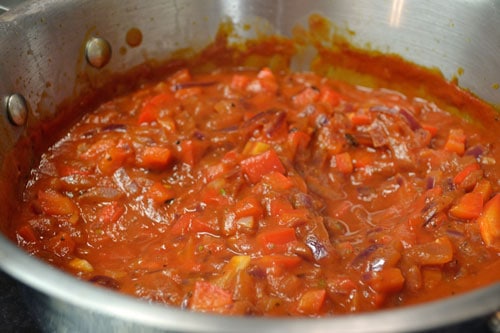

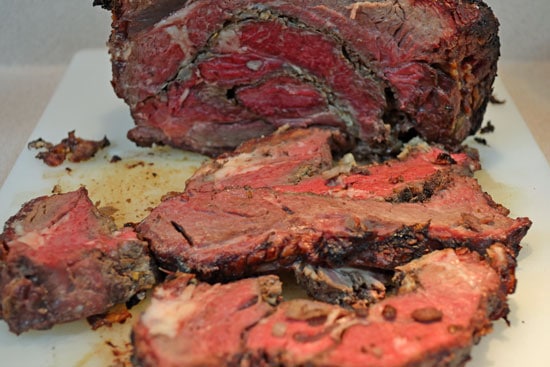

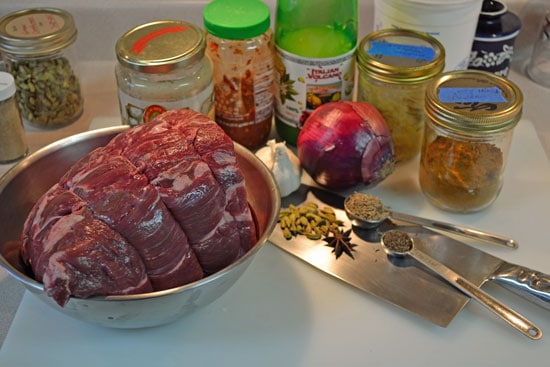
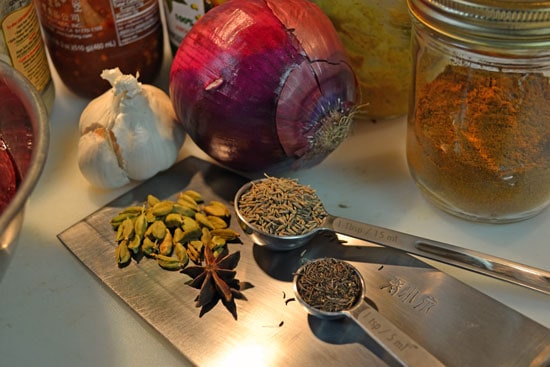
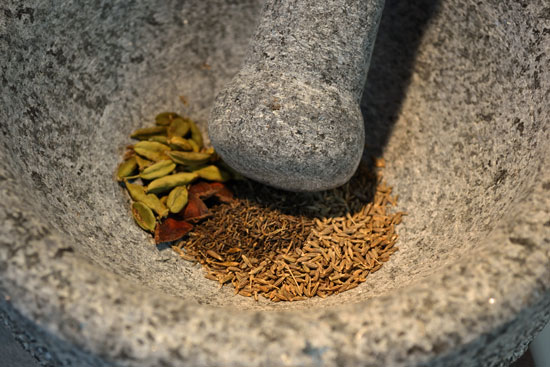


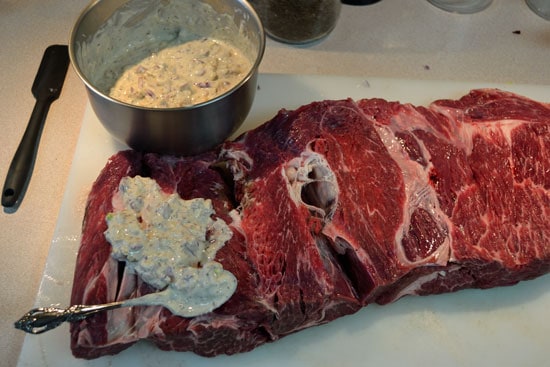
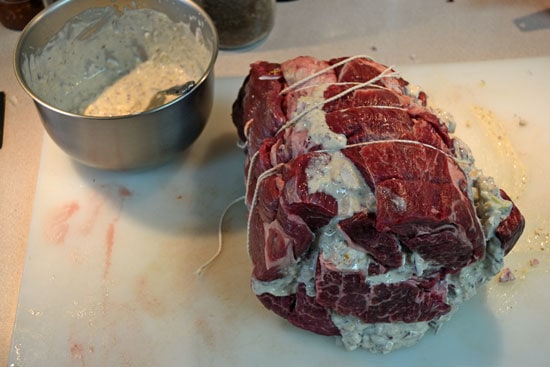
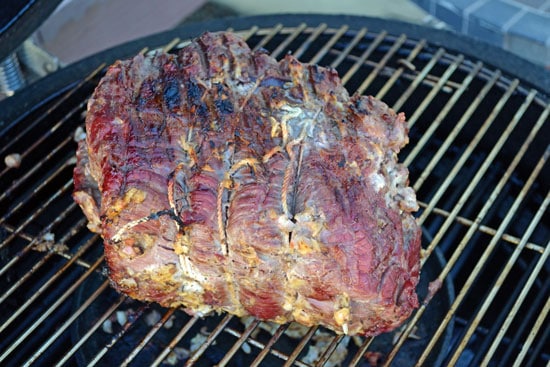
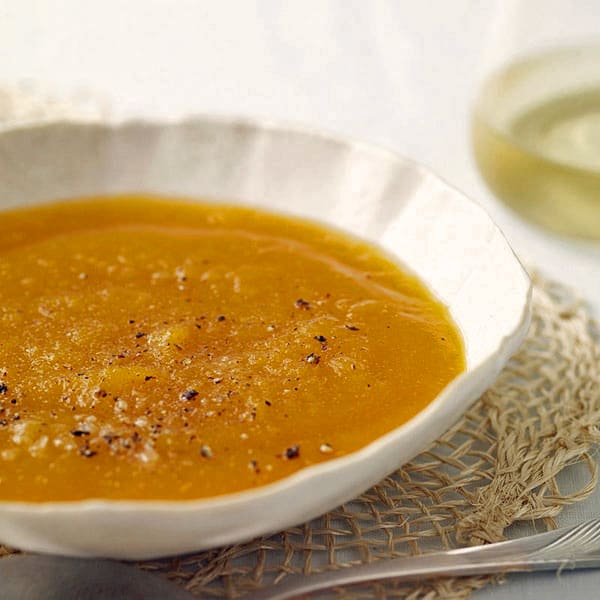


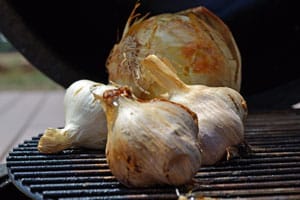

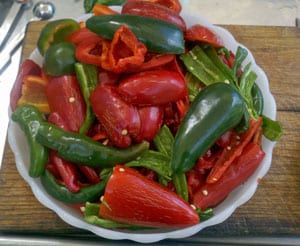


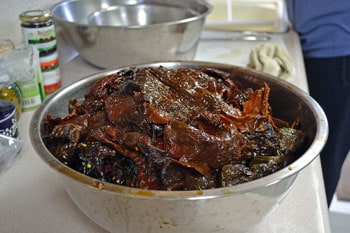










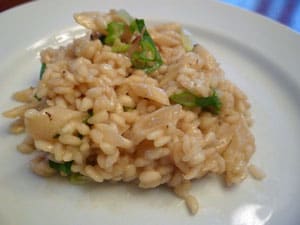
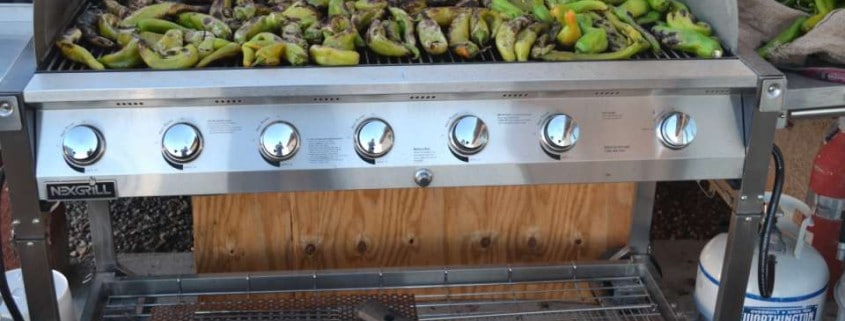
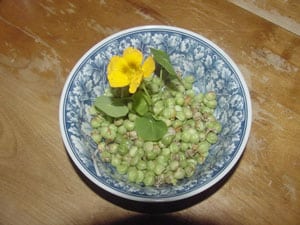

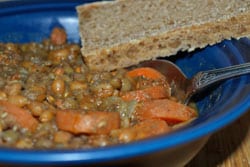
 © 2024 Terroir Seeds | Underwood Gardens
© 2024 Terroir Seeds | Underwood Gardens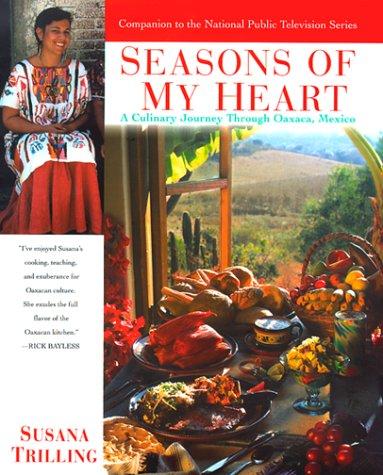
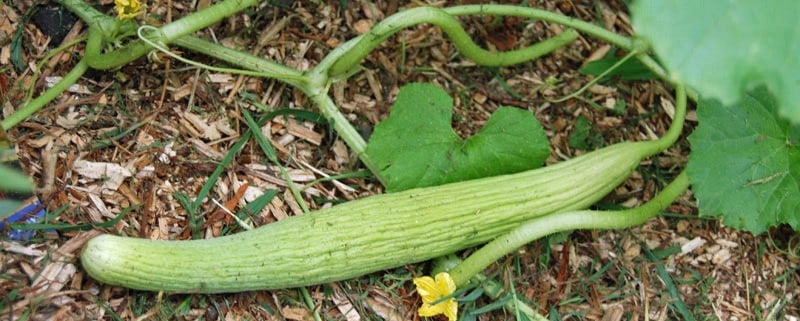
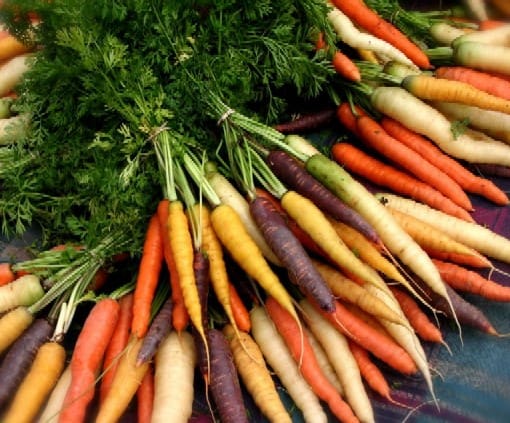

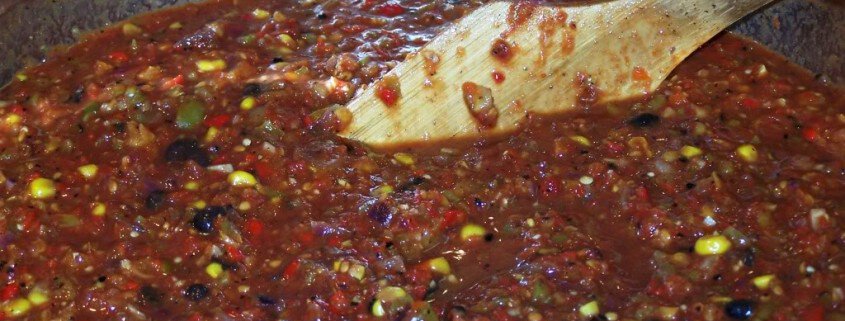

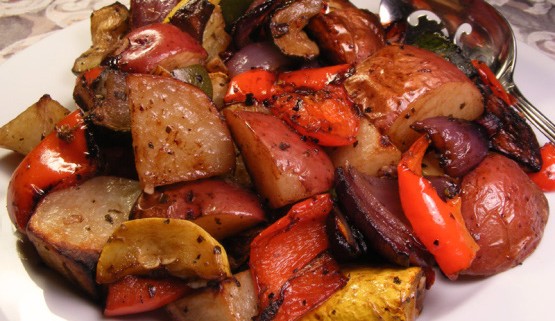

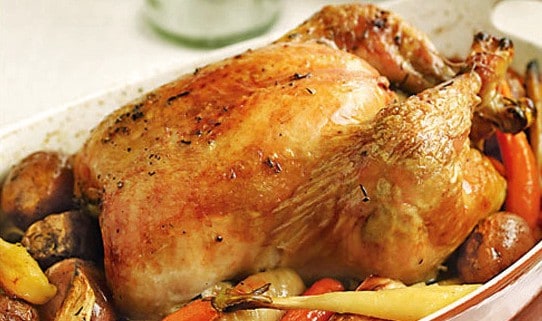

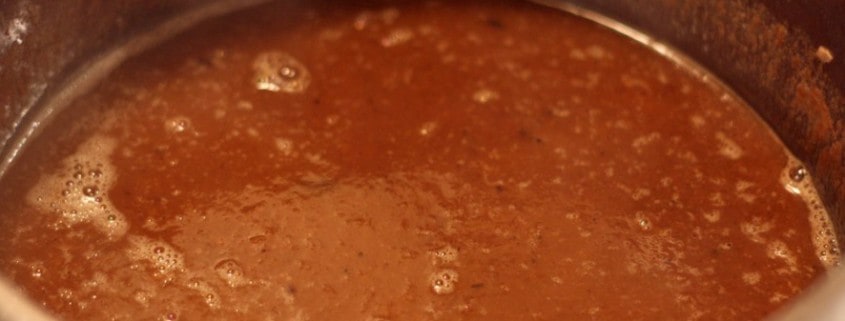

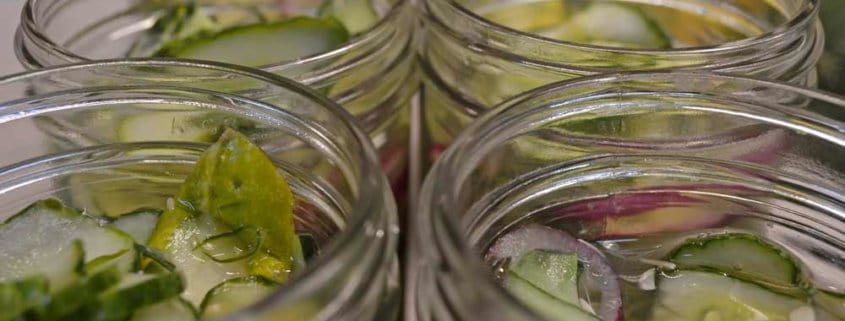 2018 Terroir Seeds | Underwood Gardens
2018 Terroir Seeds | Underwood Gardens